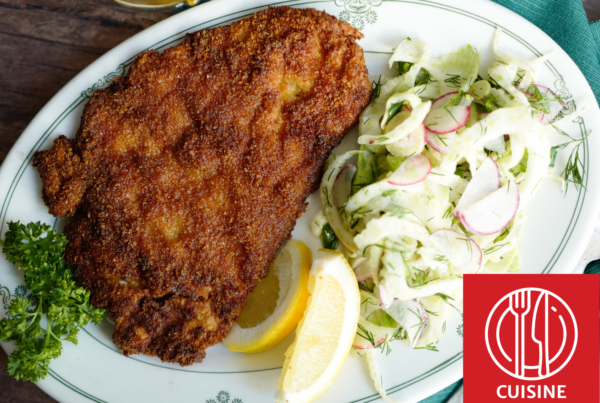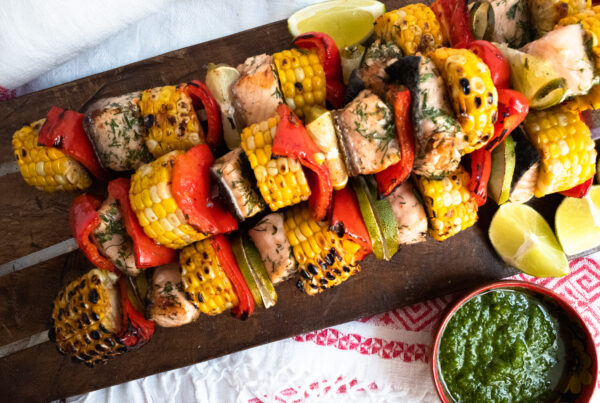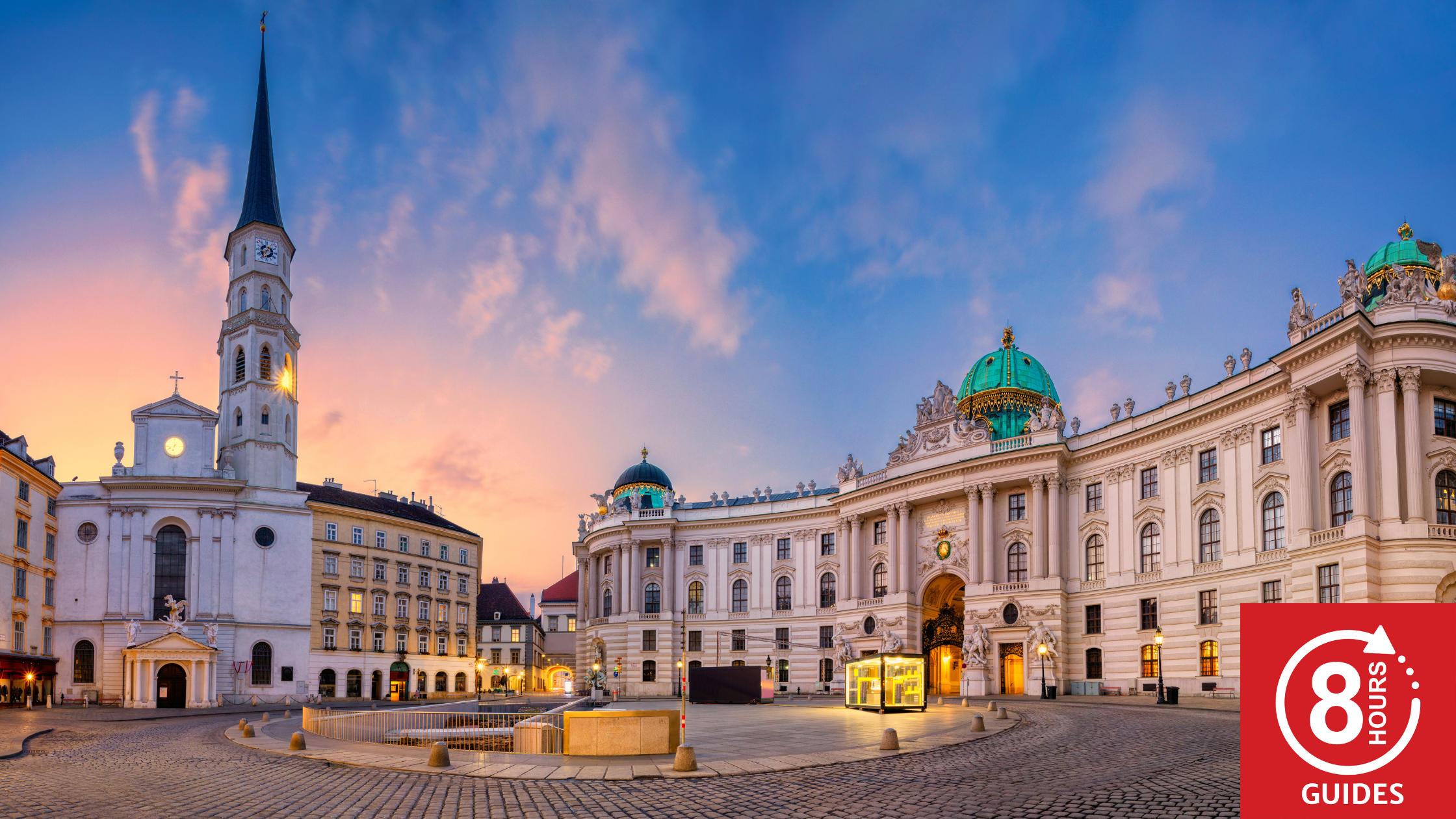
Vienna is known as “The City of Music,” but also “The City of Dreams.” Both monikers seem apt: the magnificent capital of Austria boasts stunning monuments such as St. Stephen’s Cathedral, the wonderful museumsquartier wien, the world’s oldest ferris wheel, magnificent palaces, and the unique Viennese coffeehouse culture. One day isn’t nearly enough to see everything, which is why this guide is divided thematically, to help you choose a focus and make the most of the time you have.
This post contains affiliate links, including links from the Amazon Associates programs. These links will direct you to products I recommend for further exploration and enjoyment of the topics I cover on my website and in my lectures. See more in the Privacy Policy below.
The Essential Things to Do in Vienna
A Walking Tour Through Historic City Center
If this is your first time in Vienna, experience the grandeur of Vienna’s historic center with this walking tour that takes you through the heart of the city, showcasing its imperial past and vibrant present and many of its main attractions.
Start at Stephansplatz
Begin your tour at Stephansplatz, the geographical and cultural heart of Vienna. Here, you’ll find the iconic St. Stephen’s Cathedral (Stephansdom), a masterpiece of Gothic architecture. Take time to explore St. Stephen’s Cathedral, the city’s 12th-century cathedral, known for its colorful roof tiles and towering spire. Consider climbing the 343 steps to the top of the South Tower for panoramic views of Vienna.
Book your entry ticket to St. Stephen’s in advance.
From Stephansplatz, stroll down Graben, one of Vienna’s most famous shopping streets. Stop to admire the elaborate Plague Column (Pestsäule), erected in the 17th century to commemorate the end of a devastating plague.
No visit to Vienna is complete without experiencing its famous café culture. Café Central: Stop for a coffee and slice of Sachertorte at this historic café, once frequented by intellectuals like Sigmund Freud and Leon Trotsky.
Conclude your tour at the magnificent Vienna State Opera, one of the world’s leading opera houses. Opera House Tour: If possible, take a guided tour to see the opulent interiors and learn about the building’s history.
This walking tour covers approximately 3-4 kilometers and can be comfortably completed in 3-4 hours, depending on how much time you spend at each stop.
If you need some more structure, consider this Old Town Highlights Private Walking Tour.
Royal and Imperial Vienna
Belvedere Palace
Address: Prinz Eugen-Straße 27, 1030 Wien | Book Tickets in Advance
The Belvedere, a masterpiece of Baroque architecture, was built as a summer residence for Prince Eugene of Savoy in the early 18th century. It consists of two palaces (Upper and Lower Belvedere) set in a Baroque park landscape.
Today, it is better known as the Belvedere Museum, as it houses an impressive art collection, including Gustav Klimt’s famous “The Kiss.” Don’t miss the Marble Hall in the Upper Belvedere, with its stunning frescoes, or the intricate Baroque gardens between the two palaces.
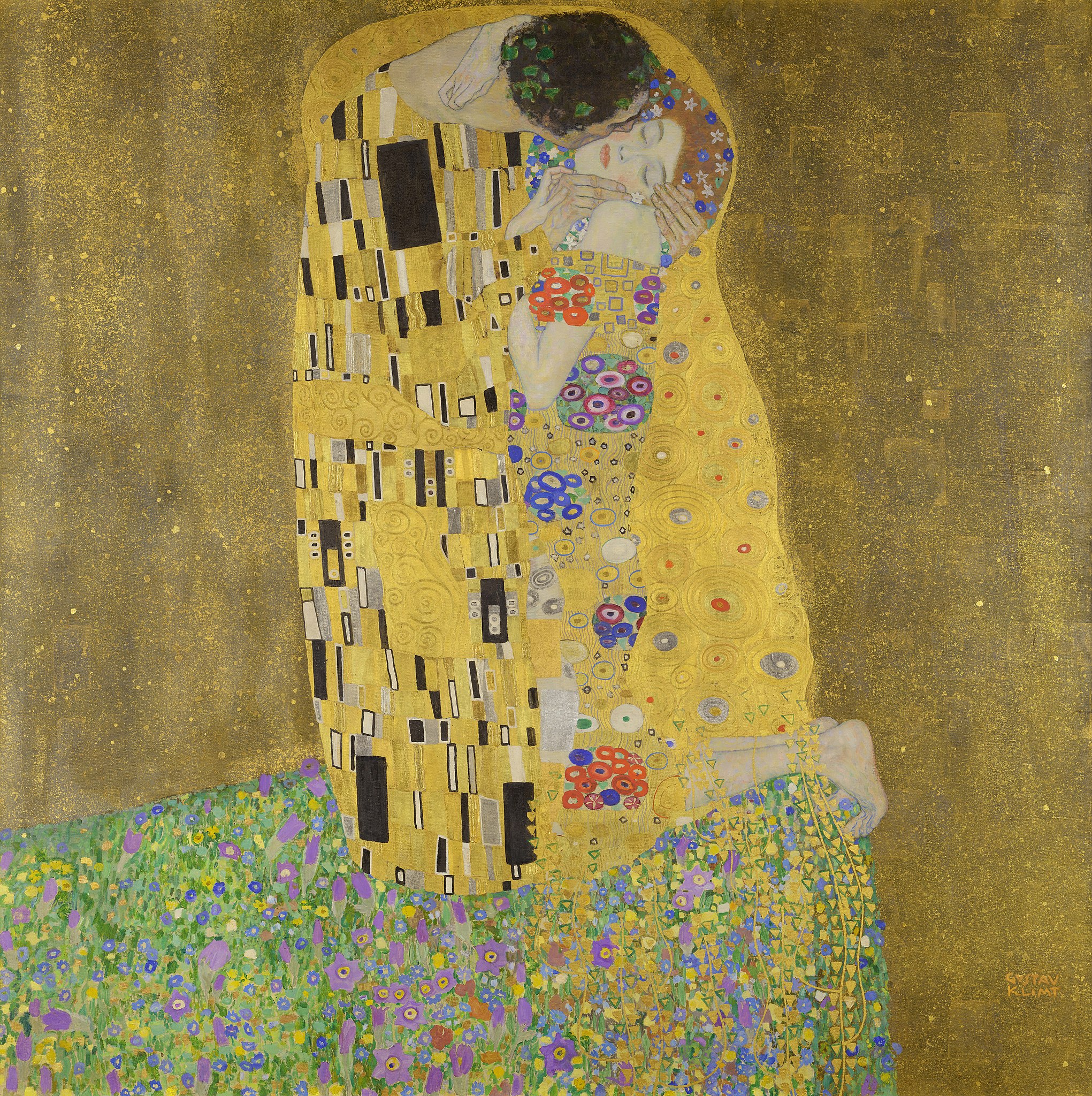
“The Kiss” by Gustav Klimt | Via Wikimedia Commons
Schönbrunn Palace
Address: Schönbrunner Schloßstraße 47, 1130 Wien | Book Tickets in Advance
Schonbrunn Palace, a UNESCO World Heritage site, was the summer residence of the Habsburg rulers. Built in the 1740s under Maria Theresa, the palace showcases the opulence of imperial Austria. With 1,441 rooms, it’s a testament to Baroque architecture and design.
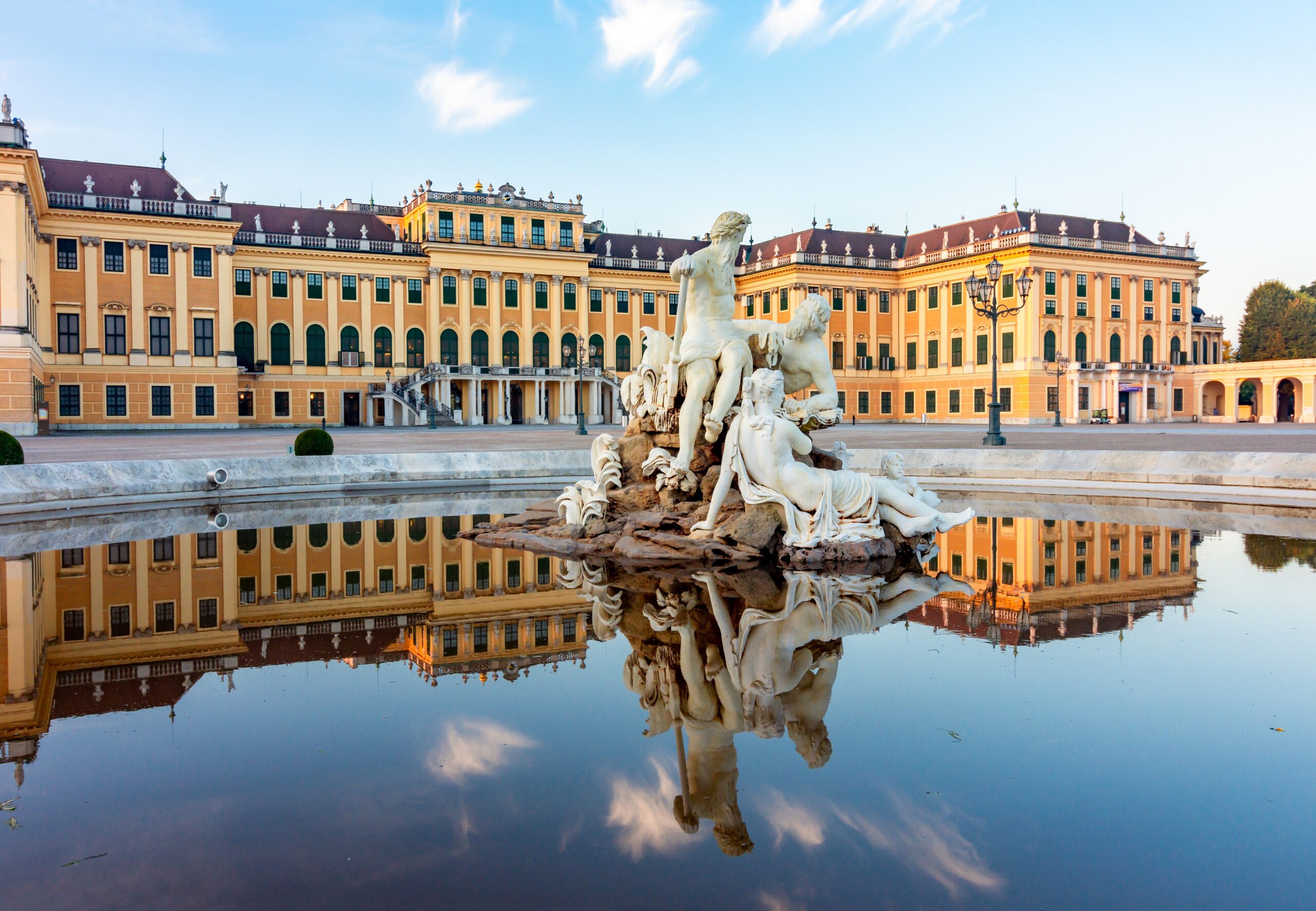
Schönbrunn Palace | Photo Credit: Mister Vlad via Shutterstock
Must-see attractions include the Grand Tour of the staterooms, the magnificent gardens with the Gloriette, and the world’s oldest zoo. Don’t miss the Mirror Room, where six-year-old Mozart gave his first concert for Empress Maria Theresa.
Hofburg Palace
Address: Michaelerkuppel, 1010 Wien | Book Tickets in Advance
The Hofburg, located in the heart of Vienna, served as the principal imperial palace of the Habsburg dynasty for over six centuries. It has been the seat of power for various empires and republics since the 13th century. Today, it’s the official residence of the President of Austria.
Visitors can explore the Imperial Apartments, the Sisi Museum dedicated to Empress Elisabeth, and the Silver Collection. The Spanish Riding School, famous for its Lipizzan horses, and the Austrian National Library are also part of the Hofburg complex.
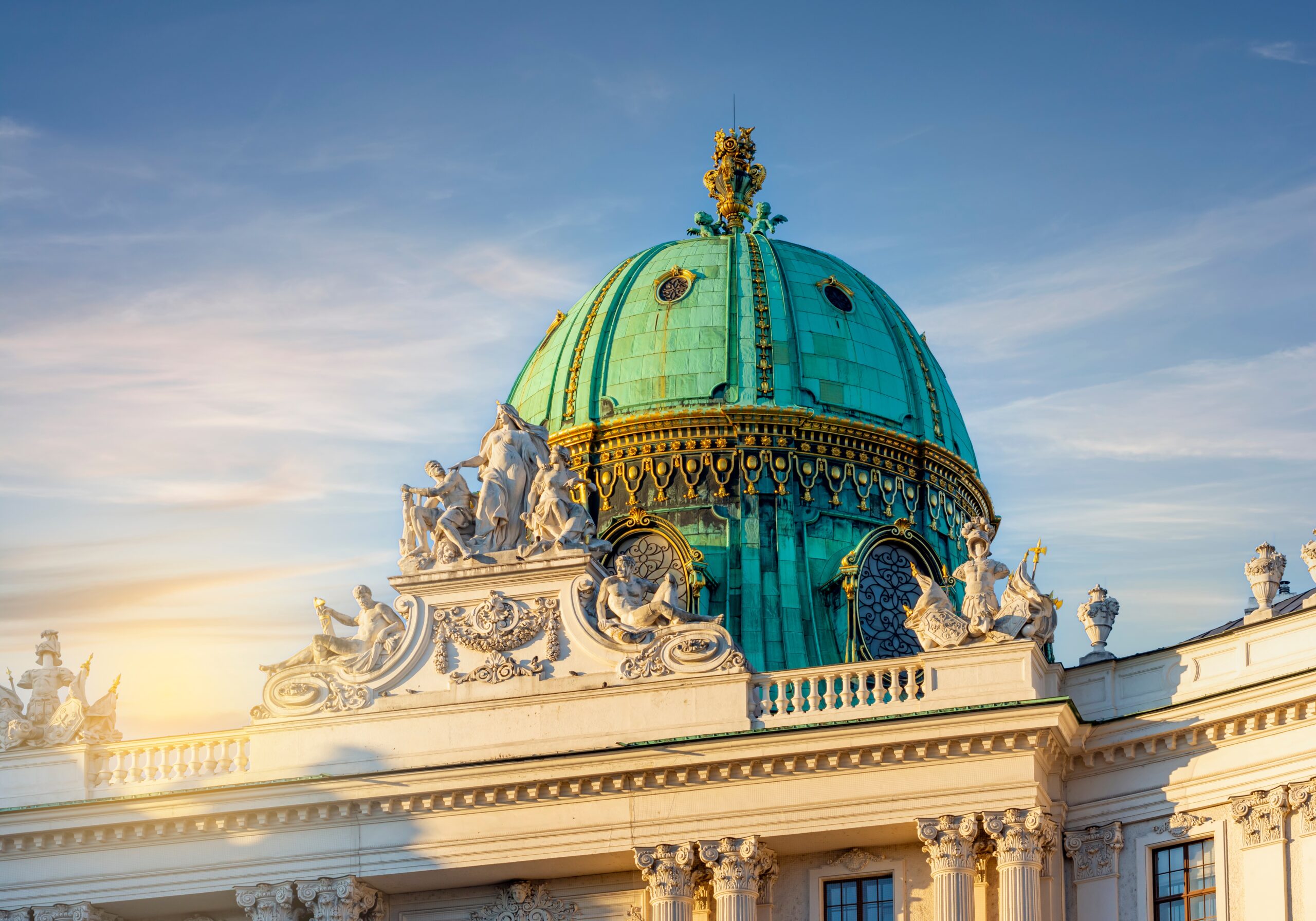
The Hofburg Palace | Photo credit: Mister Vlad via Shutterstock
The Spanish Riding School
The school is home to the famous Lipizzan horses, who display their classical dressage prowess in its stunning baroque hall. Visitors can attend performances or take guided tours to learn about the school’s history and its connection to the imperial family.
Find out more about the Spanish Riding School from this article.
The Imperial Treasury
Address: Hofburg, Schweizerhof, 1010 Wien | Book Tickets in Advance
The Imperial Treasury, located in the Hofburg Palace, houses a collection of imperial regalia and precious objects collected by the Habsburgs over centuries. It was established in the 13th century and contains some of the most important treasures in European history.
Must-see items include the Imperial Crown of the Holy Roman Empire, the Austrian Imperial Crown, and the Burgundian Treasury. The collection also features religious relics, including a piece of the True Cross and the Holy Lance.
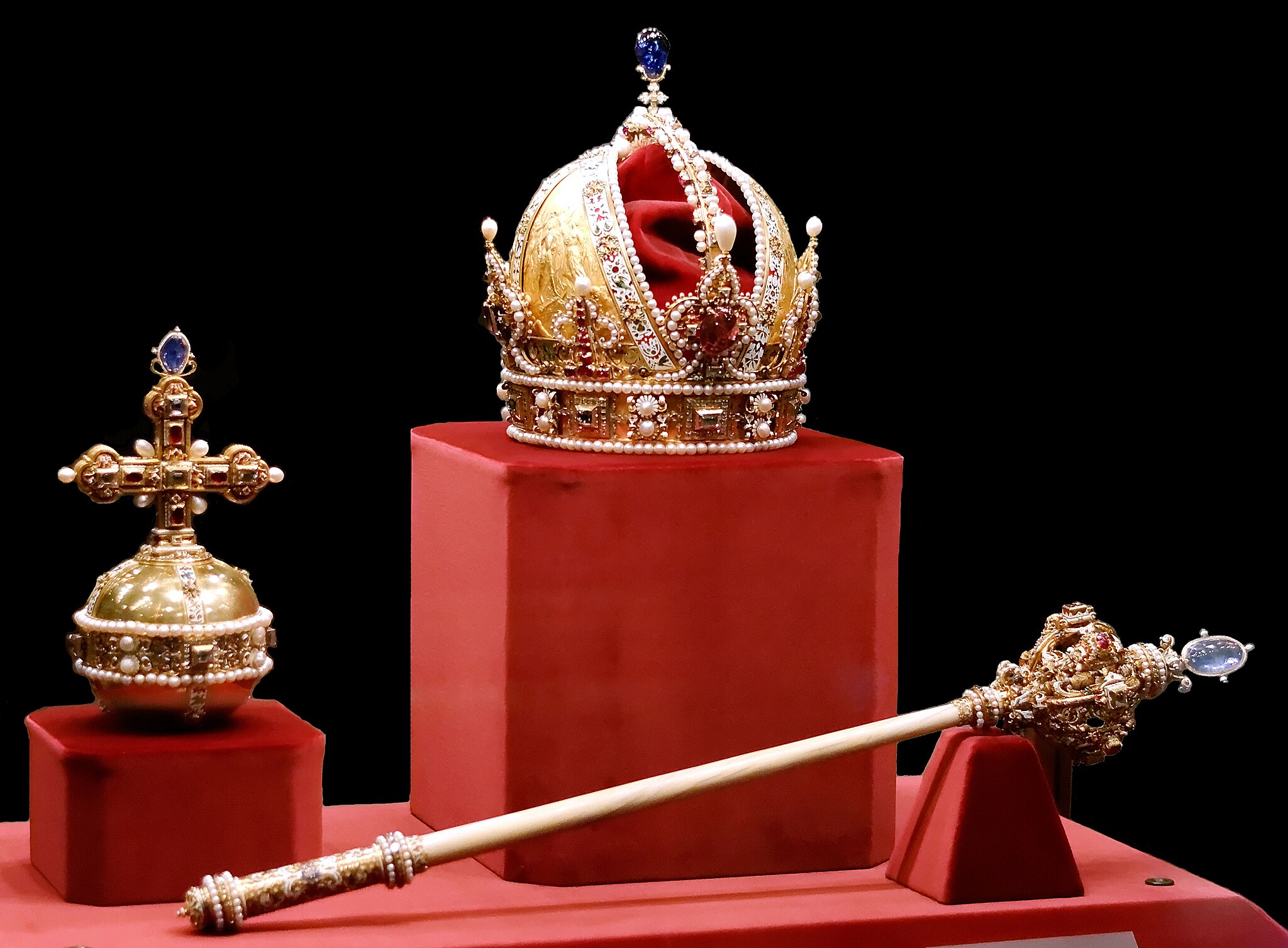
The Imperial Regalia | Photo credit: Yelkrokoyade via Shutterstock
Musical Vienna
Vienna is justifiably proud of its nickname “The City of Music,” and of the number of titanic artists who created unforgettable music in Vienna. From Mozart to Mahler, Beethoven to Strauss, music pulses through the city’s streets. In 2025 there will be a particular focus on Johann Strauss as the city celebrated his 200th birthday with festivals, gala concerts, and special exhibitions.
Book Tickets in Advance
The Vienna State Opera
Address: Opernring 2, 1010 Wien
The Vienna State Opera, opened in 1869, is one of the world’s leading opera houses. Despite being heavily damaged during World War II, it was meticulously restored and triumphantly reopened in 1955. The opera house has been home to many of the world’s greatest composers, conductors, and performers.
Attend a world-class opera or ballet performance, or take a guided tour to learn about the building’s rich history and see behind the scenes. During summer, live performances are broadcast on a large screen outside the opera house.
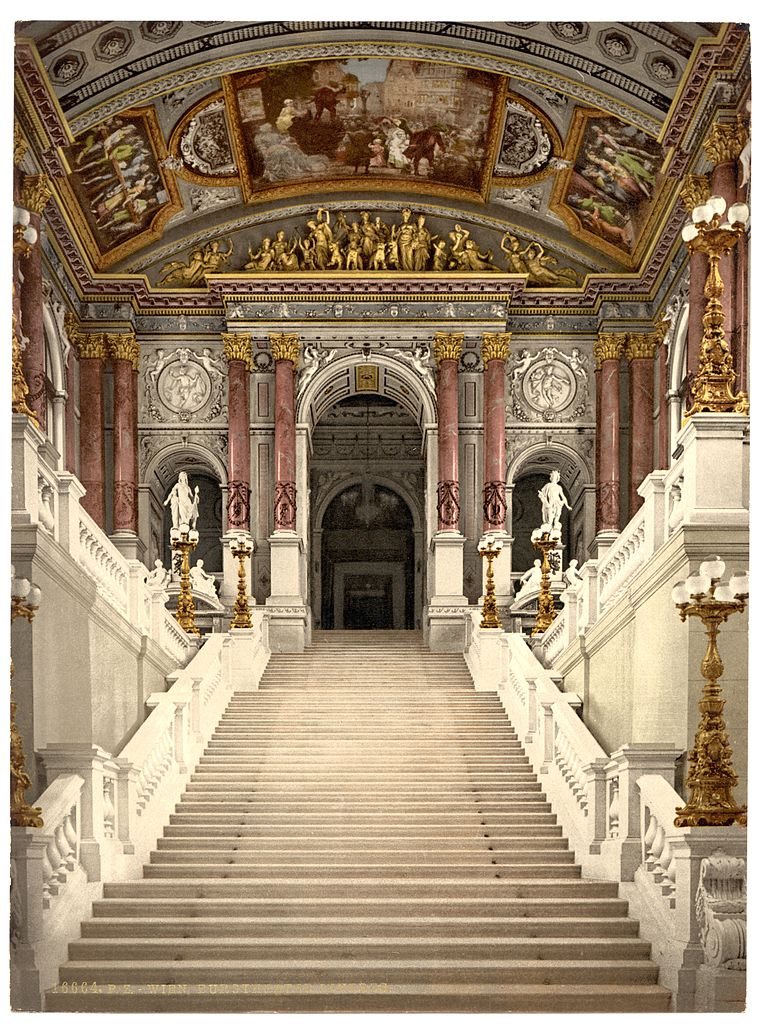
Musikverein
Address: Musikvereinsplatz 1, 1010 Wien | Book Tickets in Advance
The Musikverein, home to the Vienna Philharmonic Orchestra, was opened in 1870. Its main hall, the Golden Hall, is renowned for its acoustics and is one of the finest concert halls in the world. It’s also famous as the venue for the annual New Year’s Concert.
Attend a concert in one of the venue’s stunning halls, or take a guided tour to learn about the building’s history and architecture. The Golden Hall, with its ornate decorations and perfect acoustics, is a must-see for any music lover.
House of Music [haus der musik]
Address: Seilerstätte 30, 1010 Wien | Website: https://www.hausdermusik.com/en/
The House of Music, opened in 2000, is an interactive sound museum that explores the world of music and sound. It’s located in the former Palais of Archduke Charles, where Otto Nicolai, founder of the Vienna Philharmonic, once lived.
Visitors can explore floors dedicated to the great composers, conduct a virtual orchestra, and create their own music. Don’t miss the “Sonosphere” where you can experience sound in the womb, or the “Virto|Stage” where you can conduct the Vienna Philharmonic.
Mozart House Vienna
Address: Domgasse 5, 1010 Wien | Book Entry Tickets in Advance
Mozarthaus Vienna is the only surviving Vienna apartment of Wolfgang Amadeus Mozart. The composer lived here from 1784 to 1787, during the height of his career. It’s where he composed many of his most famous works, including “The Marriage of Figaro.”
Explore the apartment and learn about Mozart’s life in Vienna through interactive exhibits. Don’t miss the room where Mozart composed, or the multimedia presentations that bring 18th-century Vienna to life.
The House of Strauss
Döblinger Hauptstraße 76, 1190 Vienna | Book a Skip-the-Line Ticket in Advance
Johann Strauss II, often referred to as the “Waltz King,” was born in Vienna in 1825 and went on to become one of the most beloved and influential composers of the 19th century. Along with his brothers Josef and Eduard, Johann Strauss II played a pivotal role in shaping Vienna’s musical landscape and establishing the city’s reputation as the world capital of music.
The Strauss brothers were deeply intertwined with Vienna’s cultural fabric. Johann II, in particular, composed over 500 waltzes, polkas, and other dance pieces that captured the essence of Viennese society during the golden age of the Habsburg Empire. His most famous composition, “The Blue Danube,” has become an unofficial anthem of Vienna and Austria.
The Strauss family’s connection to Vienna extended beyond their music. They frequently performed at various venues throughout the city, including the newly restored House of Strauss restaurant in Vienna’s 19th district. This historic location, where Johann and his brothers once entertained guests, now offers visitors a chance to step back in time and experience the ambiance of 19th-century Vienna.
In celebration of Johann Strauss II’s 200th birthday in 2025, Vienna is planning a year-long festival that promises to be a spectacular showcase of the composer’s enduring legacy. The city will come alive with special concerts, exhibitions, and events dedicated to Strauss and his music. Visitors can expect performances by world-renowned orchestras, including the Vienna Philharmonic, as well as more intimate chamber concerts and recitals.
Artistic Vienna
Artistic Vienna
Savor the rich artistic traditions of Vienna in the city’s impressive museums and galleries, which house fantastic works collected by the Imperial court and wealthy merchants of Vienna. Here you will find works by Raphael, Gustav Klimt, Oskar Kokoschka, Vermeer, and many others.
Kunsthistorisches Museum
Address: Maria-Theresien-Platz, 1010 Wien | Book a “Skip the Line” Entry Ticket in Advance
The Kunsthistorisches Museum, opened in 1891, houses the extensive collections of the imperial family. It was built near the Hofburg Palace to house the Habsburgs’ formidable art collection and make it accessible to the public.
Must-see works include Raphael’s “Madonna in the Meadow,” Vermeer’s “The Art of Painting,” and the world’s largest collection of paintings by Pieter Bruegel the Elder. Don’t miss the Egyptian and Near Eastern Collection or the Kunstkammer, a treasure trove of precious objects.
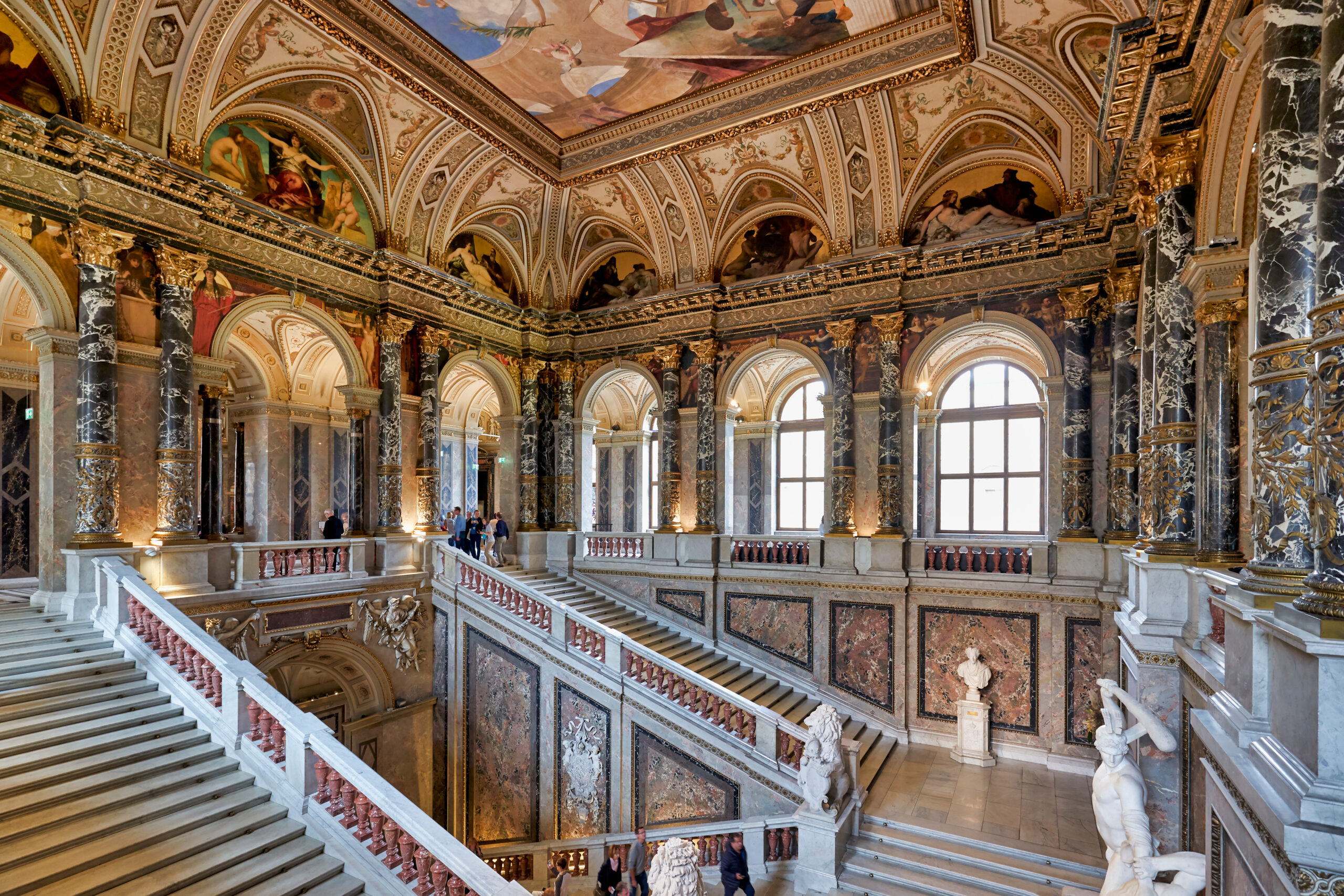
Kunsthistorisches Museum | Photo credit: marcobrivio.gallery
Leopold Museum
Address: Museumsplatz 1, 1070 Wien | Reserve Your Fast-Track Ticket
The Leopold Museum, opened in 2001, houses one of the world’s largest collections of modern Austrian art. It’s named after Rudolf and Elisabeth Leopold, who assembled the collection over five decades.
The museum is home to the world’s largest Egon Schiele collection. It also features works by Gustav Klimt, Oskar Kokoschka, and other Austrian artists of the early 20th century. Don’t miss Schiele’s “Self-Portrait with Physalis” or Klimt’s “Death and Life.”
Albertina
Address: Albertinaplatz 1, 1010 Wien | Book an Entry Ticket in Advance
The Albertina, housed in a Habsburg palace, is home to one of the world’s largest and most important print rooms. It was founded in 1768 by Duke Albert of Saxen-Teschen, son-in-law of Empress Maria Theresa.
The museum houses over a million prints and 60,000 drawings, including works by Dürer, Rubens, and Schiele. Don’t miss the permanent exhibition “Monet to Picasso,” featuring masterpieces of Impressionism and early Modernism, or the sumptuously decorated Habsburg staterooms.
Secession Building
Address: Friedrichstraße 12, 1010 Wien | Website: https://www.secession.at/en/
The Secession Building, built in 1898, is a masterpiece of Art Nouveau architecture and a symbol of the Vienna Secession movement. It was designed by Joseph Maria Olbrich as an exhibition hall for avant-garde artists who had broken away from the conservative Künstlerhaus.
The building’s most famous feature is Gustav Klimt’s Beethoven Frieze, a monumental work inspired by Beethoven’s Ninth Symphony. Don’t miss the building’s distinctive cupola of golden laurel leaves, affectionately known by locals as the “golden cabb
Modern Art in Vienna: A Contemporary Renaissance
While Vienna is renowned for its classical art and imperial grandeur, the city also boasts a vibrant contemporary art scene. The Austrian capital has embraced avant-garde movements and continues to be a hub for innovative artistic expression. Vienna’s modern art museums and galleries showcase works from the early 20th century to the present day, offering visitors a chance to explore the evolution of art in the heart of Europe.
The city’s commitment to modern art is clear in its world-class institutions and groundbreaking galleries. These spaces not only exhibit works by internationally acclaimed artists, but also provide platforms for emerging local talents. From the bold experiments of the Vienna Secession to the latest in digital and conceptual art, Vienna’s modern art scene is diverse and dynamic.
Visit some of the leading modern art museums and galleries in Vienna:
Mumok (Museum of Modern Art Ludwig Foundation Vienna)
Address: Museumsplatz 1, 1070 Wien | Purchase Skip-the-Line Tickets in Advance
Mumok is the largest museum for modern and contemporary art in Central Europe. Its collection includes works from classical modernism, pop art, and contemporary art.
Albertina Modern
Address: Karlsplatz 5, 1010 Wien | Book E-Tickets in Advance
A recent addition to Vienna’s art scene, Albertina Modern showcases post-war and contemporary art in the renovated Künstlerhaus.
Belvedere 21
Address: Arsenalstraße 1, 1030 Wien | Book Tickets in Advance
Formerly known as the 21er Haus, this museum focuses on Austrian art from the 20th and 21st centuries, as well as international contemporary art.
Kunsthalle Wien
Address: Museumsplatz 1, 1070 Wien | Website: https://kunsthallewien.at/en/
Kunsthalle Wien is a space for contemporary art and discourse, hosting temporary exhibitions of international contemporary art
Galerie Krinzinger
Address: Seilerstätte 16, 1010 Wien | Website: https://www.galerie-krinzinger.at/en/
One of Vienna’s most respected contemporary art galleries, representing both established and emerging artists.
Galerie nächst St. Stephan Rosemarie Schwarzwälder
Address: Grünangergasse 1, 1010 Wien | Website: https://www.schwarzwaelder.at/en/
A leading gallery for contemporary art, known for its intriguing exhibitions and international program.
These museums and galleries offer a diverse range of modern art experiences, from large-scale installations to intimate exhibitions. They provide a perfect counterpoint to Vienna’s classical art scene, showcasing the city’s ongoing commitment to artistic innovation and experimentation.
Quirky Facts & Enduring Legends
Vienna: The City of Snow Globes
Vienna, known for its rich cultural heritage and musical legacy, also holds the distinction of being the birthplace of a beloved winter novelty – the snow globe. This charming invention, which has captured the imagination of people worldwide, has its roots in an accidental discovery in the Austrian capital.
The Accidental Invention
In 1900, Erwin Perzy, an Austrian surgical instrument mechanic, inadvertently created the first snow globe while attempting to improve the brightness of the newly invented electric light bulb. Perzy was inspired by shoemakers who used water-filled glass globes to intensify candlelight, a technique that enhanced their work in dimly lit workshops.
Perzy’s experimentation led him to add various materials to a water-filled glass globe in an attempt to reflect and amplify light. When he added semolina (a type of wheat flour), he was struck by how the tiny particles floated down through the water, reminiscent of falling snow. This serendipitous moment marked the birth of the snow globe.
From Medical Aid to Beloved Souvenir
Recognizing the charm of his creation, Perzy shifted his focus from medical lighting to producing snow globes. He founded a company, Original Vienna Snow Globes, which still operates today under the management of his descendants. The company’s first significant order came from Emperor Franz Joseph I, who commissioned the globes as imperial gifts.
Initially, Perzy’s snow globes featured miniature churches and nativity scenes. Over time, the designs expanded to include famous Viennese landmarks, making them popular souvenirs for tourists visiting the city.
The Evolution of Snow Globe Production
The early snow globes were made entirely of glass and filled with water. The ‘snow’ was created using ground rice, wax, or even bone chips. Today’s snow globes use a mixture of water and glycol or glycerin to slow the descent of the snow particles, which are now typically made of plastic or ceramic materials.
The Original Vienna Snow Globes company, still in the 17th district of Vienna, continues to produce handcrafted snow globes using traditional methods. Each globe is carefully assembled, filled, and sealed by skilled artisans, ensuring the quality and uniqueness of every piece.
A Global Phenomenon
From its humble beginnings in Vienna, the snow globe has become a global phenomenon. Collectors worldwide seek unique and vintage snow globes, with some rare pieces fetching high prices at auctions. The appeal of snow globes extends beyond mere novelty; they often serve as mementos of special places or events, encapsulating memories in a miniature, snow-filled world.
Visiting the Birthplace of Snow Globes
For those interested in the history of this whimsical invention, a visit to Vienna offers the opportunity to see where it all began. The Original Vienna Snow Globes company operates a small museum and shop where visitors can learn about the production process and purchase authentic Viennese snow globes.
Location: Schumanngasse 87, 1170 Vienna, Austria Website: https://www.viennasnowglobe.at/en/
Whether you’re a collector, a history enthusiast, or simply someone who appreciates the magic of a tiny, snow-filled world, the story of Vienna’s snow globes adds another layer to the city’s rich tapestry of innovation and creativity. It’s a reminder that sometimes, the most enchanting inventions come from the most unexpected places.
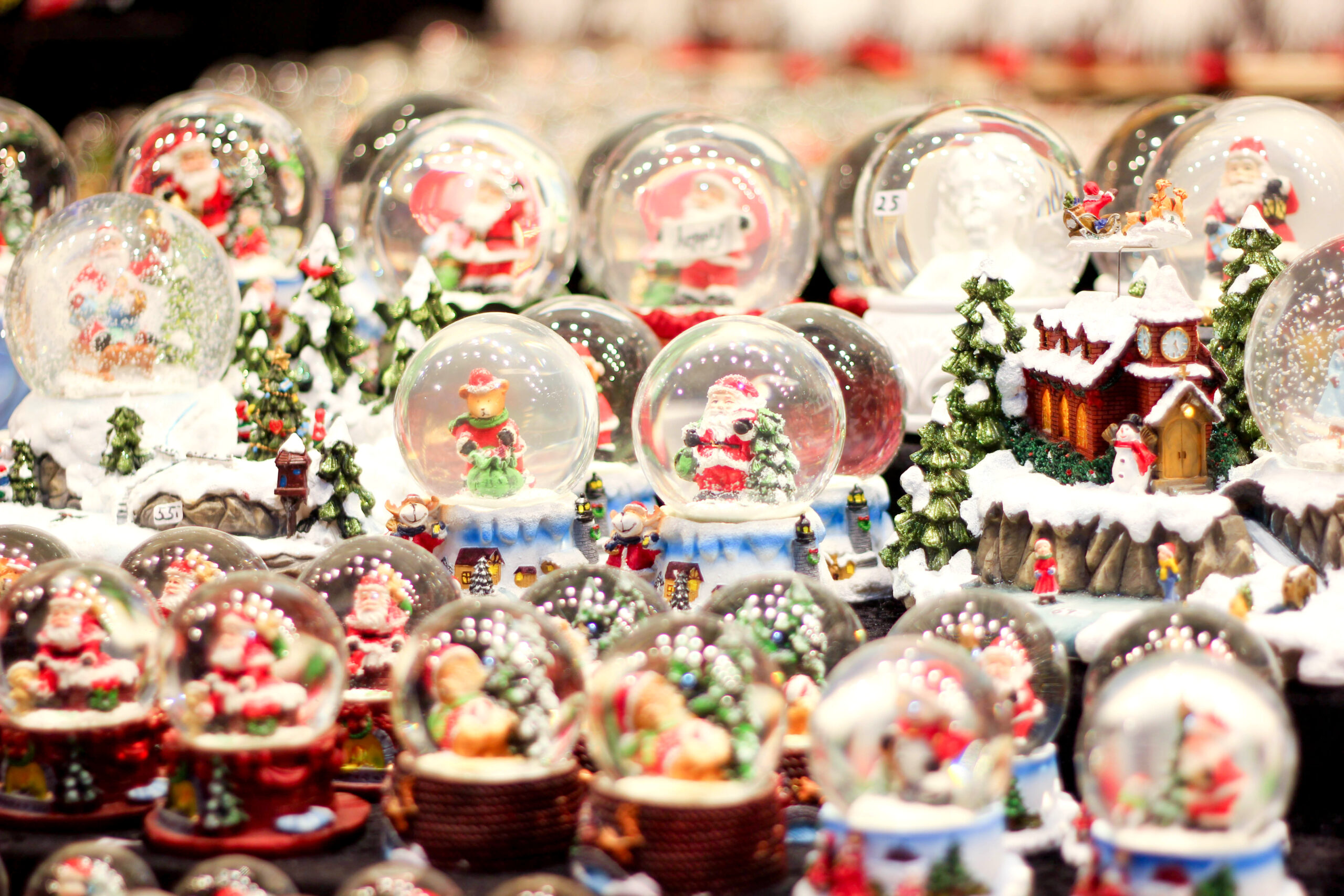
Snow Globes in Vienna | Photo Credit: Heidi Becker via Shutterstock
The Wiener Riesenrad is the World’s Oldest Ferris wheel.
Vienna’s Giant Ferris Wheel holds the title of the oldest Ferris wheel in the world that’s still in operation. Known as the Wiener Riesenrad in German, it’s 65 metres (212 feet) tall.
Originally built to celebrate the golden jubilee of Emperor Franz Joseph in 1897, the Ferris wheel was almost scrapped because of its initial high costs. Thankfully, the public adored it, ensuring its preservation.
Today, it remains a beloved attraction in the Prater amusement park. Book a Skip-the-Line ticket in advance.
Savoring Vienna: What to Eat and Drink in Vienna
Gourmands have always found Vienna a kind of Mecca. The city’s rich culinary history reveals diverse cultural influences that have shaped a gastronomic tradition unlike any other. From opulent imperial banquets to cozy coffee house corners, Austria’s capital invites food enthusiasts to explore a world of flavors that seamlessly blend tradition with innovation.
Vienna, the heart of Austria, is not just a city of music and art, but also a paradise for food lovers. From traditional Viennese cuisine to world-class wines, the city offers a gastronomic experience that’s hard to forget. To truly appreciate the rich tapestry of flavors that Vienna offers, it’s essential to understand the historical influences that have shaped Austrian cuisine over the centuries.
- Join an experienced local guide for Vienna Highlights: Food, Coffee and Market Visit (6 Hours).
- Learn more about the rich history of Vienna’s chocolate tradition with a chocolate-making workshop at the Chocolate Museum.
A Brief History of Austrian Cuisine
Austrian cuisine is a melting pot of flavors and techniques, influenced by its geographical position at the crossroads of Europe and its historical role as the center of a vast empire. Austria’s ecclectic cuisine has numerous influences.
Habsburg Empire
As the seat of the Habsburg Empire for centuries, Vienna became a culinary melting pot. The empire’s vast territories, stretching from Italy to Ukraine, brought diverse ingredients and cooking styles to the capital.
Hungarian Influence
The Austro-Hungarian Empire led to a significant Hungarian impact on Austrian cuisine. Dishes like goulash and the use of paprika became popular.
Bohemian and Czech Influence
Dumplings (Knödel) and certain types of pastries were adopted from Bohemian cuisine.
Italian Influence
The proximity to Italy brought pasta dishes and the use of polenta to Austrian tables.
Jewish Influence
The Jewish community in Vienna contributed significantly to the city’s culinary scene, introducing dishes like Gefilte Fish and influencing the development of Viennese pastries.
This rich history has resulted in a cuisine that is both diverse and uniquely Austrian, blending influences from across Central Europe while maintaining its own distinct identity.
Traditional Viennese Dishes
Enjoy a traditional Viennese meal at a private home.
Wiener Schnitzel
A thin, breaded and deep-fried veal cutlet, typically served with potato salad. This dish, while similar to Italian cotoletta, has become synonymous with Vienna.
Learn to make authentic Weiner Schnitzel and Apfelstrudel in this fun and interactive cooking class.
Get my recipe for Weiner Schnitzel here.
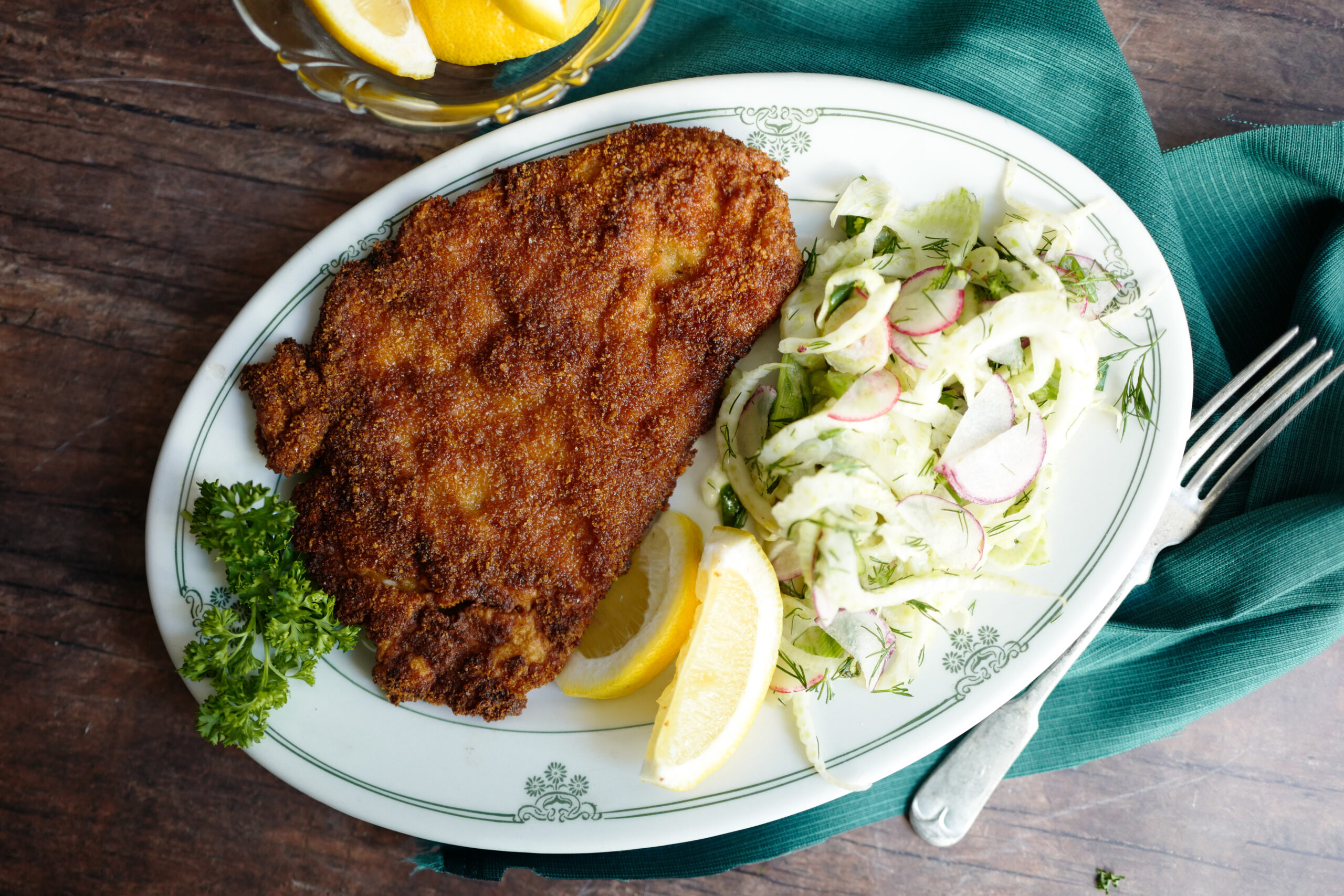
Weiner Schnitzel | Photo Credit: Jennifer Eremeeva
Tafelspitz
Boiled beef in broth, served with apple and horseradish sauce. This was reportedly Emperor Franz Joseph I’s favorite dish.
Apfelstrudel
The famous Austrian apple strudel, a must-try dessert. Its delicate, flaky pastry is a testament to the skill of Viennese bakers.
Learn to make authentic Apfelstrudel from a local expert!
Sachertorte
A rich chocolate cake with apricot jam, invented at the Hotel Sacher in 1832 by Franz Sacher.
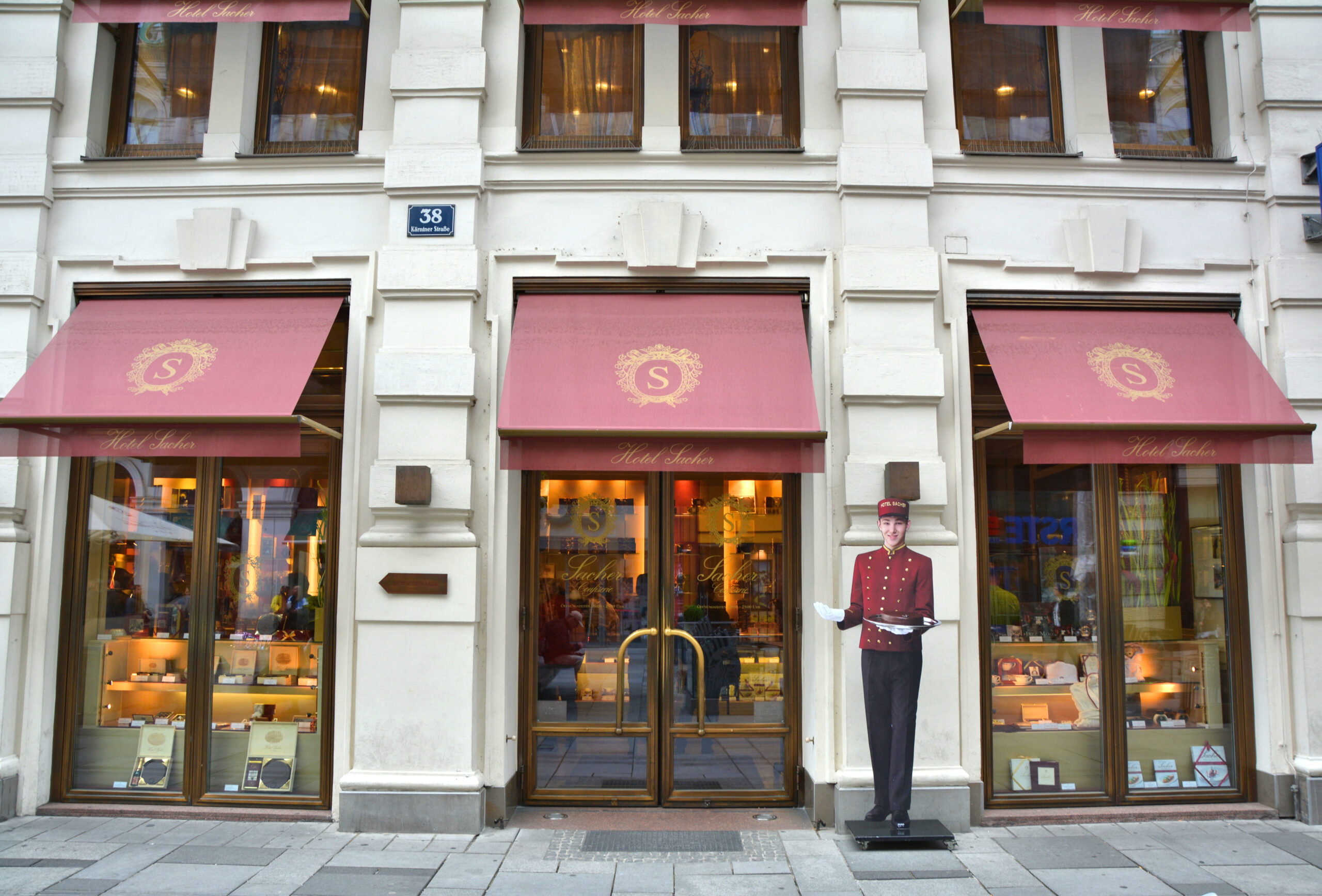
The Hotel Sacher | Via Shutterstock
Wiener Gulasch
A beef stew with a thick gravy showcasing the Hungarian influence on Viennese cuisine.
Kaiserschmarrn
A sweet, fluffy shredded pancake named after Emperor Franz Joseph I, who was very fond of this dish.
Austrian Wines
Vienna is the “City of Vines”
Unlike most major capitals, Vienna boasts over 700 hectares (1,700 acres) of vineyards within its city limits. This makes it the only world capital that produces significant quantities of wine right inside the city.
As a result, Vienna has a unique wine tavern culture called “Heuriger”. These family-run taverns serve wine produced from their own grapes.
Vienna’s Unique Wine Tavern Culture: The Heuriger Experience
Vienna, often celebrated for its classical music and imperial history, harbors a lesser-known but equally enchanting facet of its culture: the Heuriger. These traditional wine taverns are an integral part of Viennese life, offering a unique blend of local wine, authentic cuisine, and convivial atmosphere.
What is a Heuriger?
The term “Heuriger” (pronounced HOY-rig-er) literally means “this year’s” in Austrian German, referring to the new wine of the current vintage. These taverns are family-run establishments that serve wine produced from their own vineyards, typically located within the city limits of Vienna.
A Tradition Rooted in History
The Heuriger tradition dates back to 1784 when Emperor Joseph II issued a decree allowing winemakers to sell their wine directly to consumers. This led to the establishment of these charming taverns, which have since become a beloved institution in Vienna.
The Heuriger Experience
Visiting a Heuriger is more than just wine tasting; it’s an immersion into Viennese culture. Here’s what you can expect: The star of the show is the young wine, often served in 0.25-liter or 0.5-liter carafes. White wines, particularly Grüner Veltliner and Riesling, are popular choices.
Heurigers offer simple but delicious local fare. Expect cold cuts, cheeses, spreads, and hearty warm dishes like Wiener Schnitzel or roast pork. The ambiance is casual and friendly. Many Heurigers have outdoor seating areas (Schanigärten) perfect for enjoying warm evenings. Some Heurigers feature live traditional Viennese music, adding to the authentic experience.

Photo Credit | Nataliya Peregudova via Shutterstock
Visit Heurigers in Vienna
Mayer am Pfarrplatz
A historic Heuriger where Beethoven once lived. Address: Pfarrplatz 2, 1190 Vienna | Website: https://www.pfarrplatz.at/
Heuriger Zimmermann
Known for its cozy atmosphere and excellent wines. Address: Armbrustergasse 5, 1190 Vienna | Website: https://www.heurigerzimmermann.at/
Weingut Wieninger
A modern Heuriger with a focus on organic wines. Address: Stammersdorfer Straße 80, 1210 Vienna | Website: https://www.wieninger.at/
Fuhrgassl-Huber
A family-run Heuriger with a beautiful garden. Address: Neustift am Walde 68, 1190 Vienna | Website: https://www.fuhrgassl-huber.at/
Heuriger Schübel-Auer
One of the oldest Heurigers in Vienna, dating back to 1724. Address: Kahlenberger Straße 22, 1190 Vienna | Website: https://www.schuebel-auer.at/
These Heurigers offer a perfect blend of traditional Viennese wine culture, local cuisine, and charming atmosphere. Remember to check their opening hours before visiting, as many Heurigers have specific schedules.
Learn more about Austrian wines in this Wine Tasting in a Private Cellar.
Austria’s wine tradition dates back to the Celts and Romans. Today, Austria produces excellent wines, particularly whites. Some popular varieties include:
Grüner Veltliner
A crisp white wine with peppery notes, Austria’s flagship variety
Riesling
Known for its fruity and floral aromas, especially from the Wachau region
Blaufränkisch
A full-bodied red wine, primarily from Burgenland
Zweigelt
A fruity, easy-drinking red wine, Austria’s most widely planted red grape variety

Vienna’s Coffee House Culture
No discussion of Viennese culinary traditions would be complete without mentioning its famous coffee house culture. Viennese coffee houses, with their marble tabletops, Thonet chairs, and newspaper tables, are institutions in their own right. They’ve been recognized by UNESCO as an Intangible Cultural Heritage. These establishments serve not just coffee, but also a wide array of traditional pastries and light meals.
Learn more about Vienna’s Coffeehouse traditions in this article.
Recommended Restaurants in Vienna
Steirereck im Stadtpark
Address: Am Heumarkt 2A, 1030 Vienna | Website: https://www.steirereck.at/en/
Known for its innovative Austrian cuisine, Steirereck is a two-Michelin-starred restaurant located in Vienna’s Stadtpark. Recommended dishes: Char with beeswax, celeriac with hazelnuts, and the famous “Milk” dessert
Plachutta
Address: Wollzeile 38, 1010 Vienna | Website: https://www.plachutta.at/en/
Famous for its traditional Viennese cuisine, particularly the Tafelspitz (boiled beef). Recommended dishes: Tafelspitz, Wiener Schnitzel, and Apple Strudel
Café Central
Address: Herrengasse 14, 1010 Vienna | Website: https://www.cafecentral.wien/en/
A historic café known for its grand interior and traditional Viennese coffee house culture. Recommended dishes: Wiener Melange (coffee), Sachertorte, and various pastries
Figlmüller
Address: Wollzeile 5, 1010 Vienna | Website: https://figlmueller.at/en/
Famous for serving the best and biggest Wiener Schnitzel in Vienna. Recommended dishes: Wiener Schnitzel, potato salad, and Kaiserschmarrn
Naschmarkt Deli
Address: Naschmarkt 421-436, 1060 Vienna | Website: https://naschmarkt-deli.at/en/
Located in Vienna’s famous Naschmarkt, this restaurant offers a mix of international and Austrian cuisine.Recommended dishes: Shakshuka, Viennese breakfast, and fresh seafood dishes
These restaurants offer a range of experiences from high-end dining to traditional Viennese fare, ensuring visitors can taste the best of what Vienna has to offer.
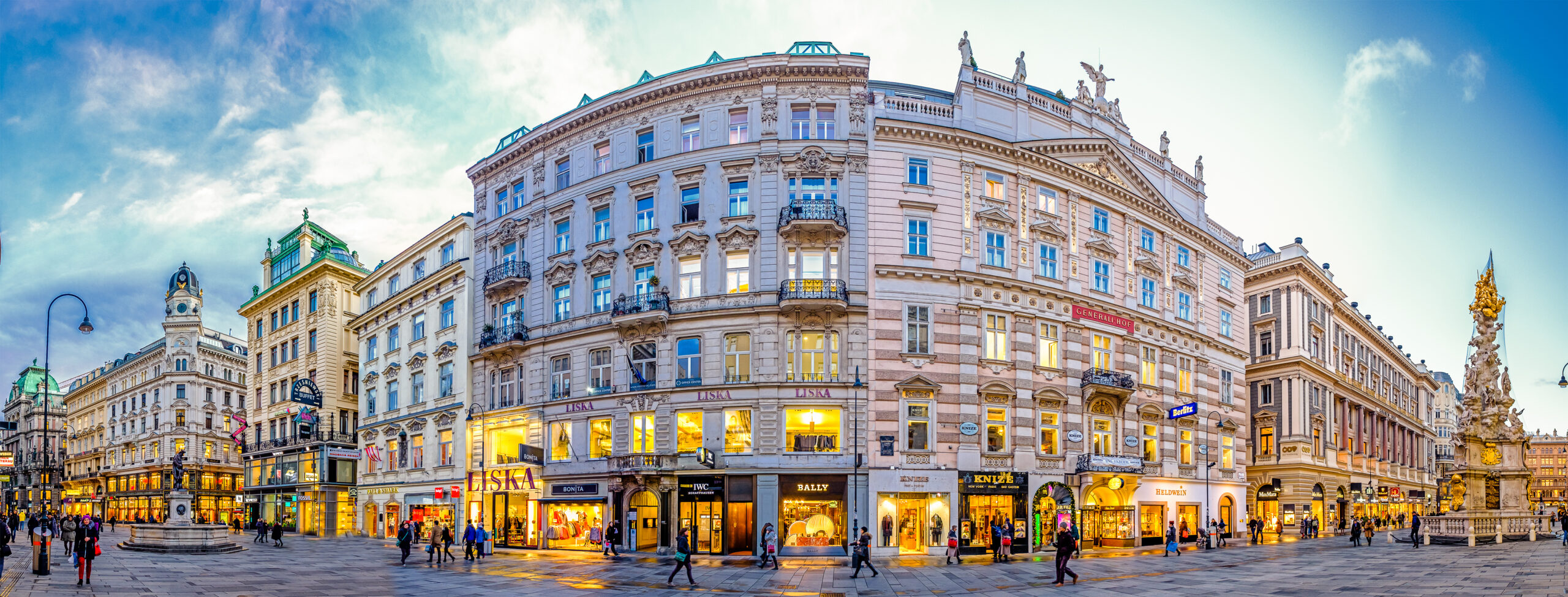
Photo Credit | FooToo via Shutterstock
Shopping in Vienna: A Guide to Unique Finds and Popular Fashion
Vienna, a city known for its imperial history and cultural richness, is also a shopper’s paradise. From traditional Austrian crafts to high-end fashion, the city offers a diverse shopping experience for high-quality goods that cater to all tastes and budgets.
Typical Viennese Objects
When shopping in Vienna, you’ll encounter a variety of unique items that reflect the city’s rich heritage:
Mozartkugeln
These chocolate-covered marzipan balls are a popular sweet treat and souvenir.
Try your hand at crafting your own Mozartkugel at a master workshop with expert guidance. Create a masterpiece with hazelnut, pistachio, marzipan, and your choice of chocolate and foils.

Mozartkugeln | Photo Credit: Zyance via Shutterstock
Augarten Porcelain
Handcrafted porcelain pieces, including figurines and tableware, from Vienna’s oldest porcelain manufactory.
Viennese Coffee
High-quality coffee beans or ground coffee from local roasters.
Sacher Torte
The famous chocolate cake in elegant wooden boxes, perfect for gifting.
Lobmeyr Crystal
Exquisite glassware and chandeliers from this renowned Viennese company.
Immerse yourself in the magic of crystal in this elegant Swarovski House Tour with Champagne and a gift!
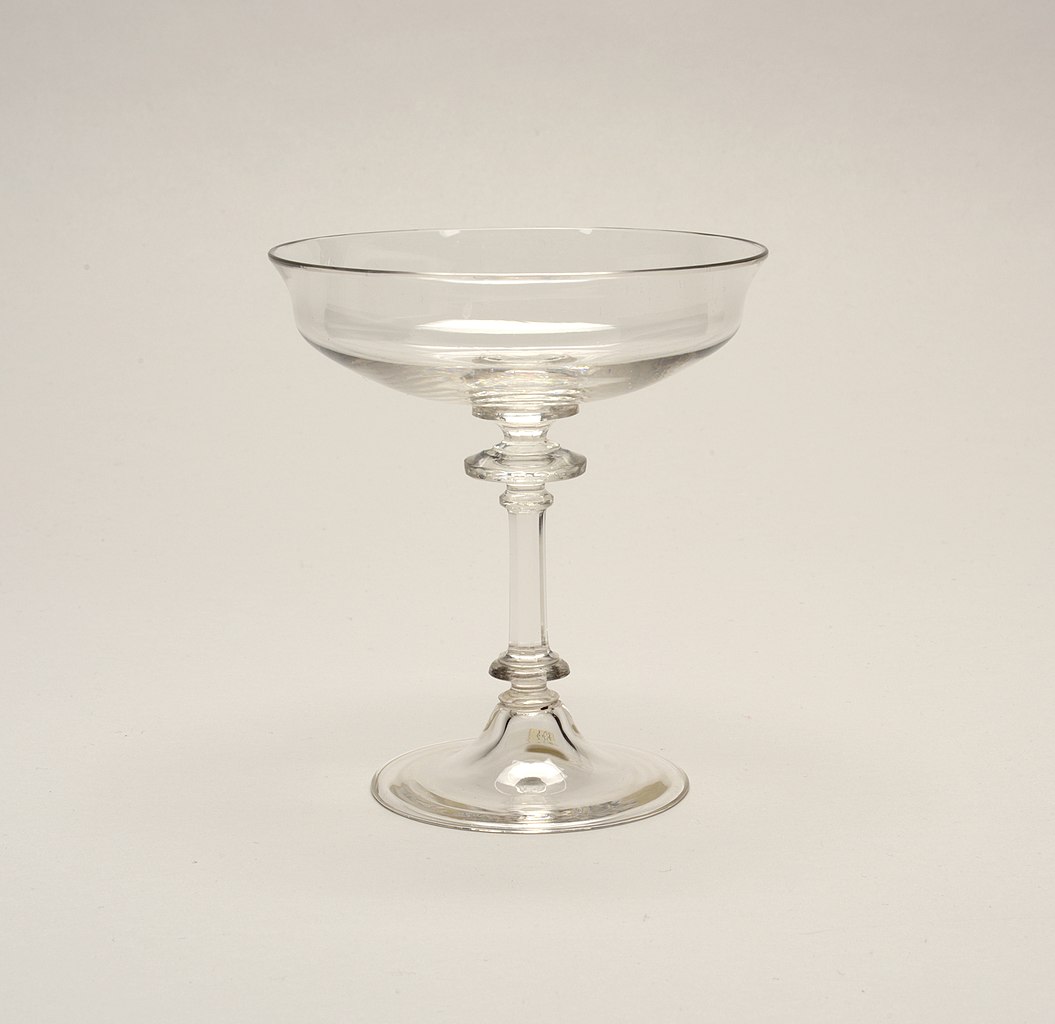
Clothing and Fashion
Vienna’s fashion scene blends traditional styles with contemporary trends:
Dirndls and Lederhosen
Traditional Austrian attire, popular during festivals and as stylish everyday wear.
Designer Brands
International luxury brands are well-represented in Vienna’s shopping districts.
Vintage Fashion
The city has a thriving vintage and second-hand scene for unique finds.
Austrian Designer Labels
Look for local designers who combine Austrian heritage with modern aesthetics.
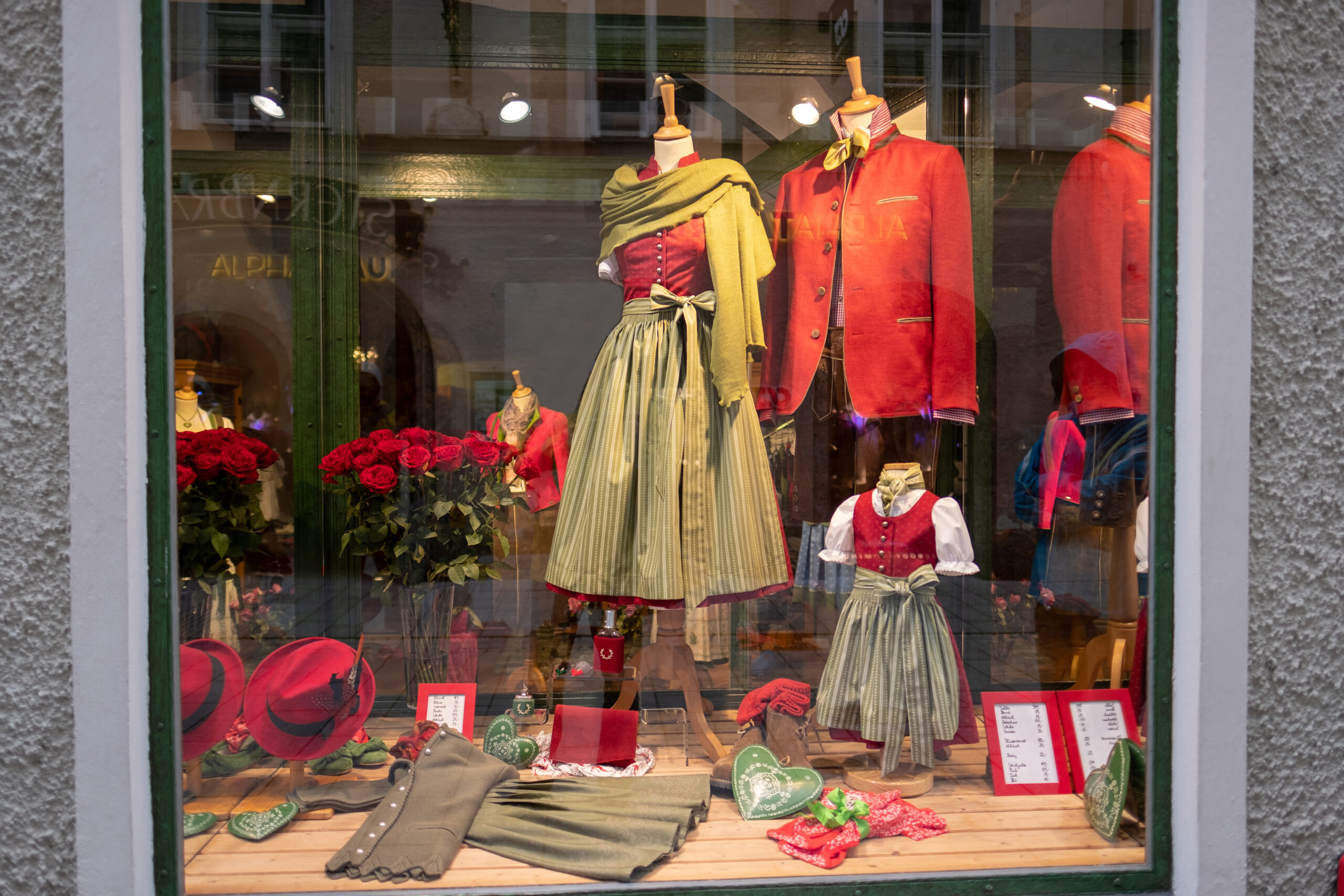
Photo credit | Dyba Images via Shutterstock
Loden Coats: A Viennese Classic
Loden coats, a quintessential Austrian garment, have been a staple of Alpine fashion for centuries. Originally worn by shepherds and farmers for protection against harsh weather, these coats are made from a water-resistant wool fabric known as Loden. The history of Loden dates back to the 16th century in Tyrol, Austria.
The production of loden cloth involves a complex process. Strong yarns are woven loosely and then undergo extensive shrinking, resulting in a felt-like texture. The fabric is repeatedly brushed with a fuller’s teasel and the nap is clipped, creating a supple yet robust material. Traditionally, loden has an earthy green color, though modern variations come in different hues.
Loden is made from the coarse, oily wool of mountain sheep and is known for its distinctive properties:
The fabric’s dense structure makes it naturally water-repellent. Loden is extremely long-lasting due to its unique manufacturing process. It also provides excellent insulation, making it ideal for cold Alpine climates. The tight weave helps block wind effectively. Despite its density, loden allows air circulation, enhancing comfort.
Today, Loden coats are synonymous with quality and tradition, appreciated for their durability, warmth, and timeless style. This is a hefty investment, but one that will literally last you a lifetime.
In Vienna, you can find authentic Loden coats at several renowned establishments:
Loden-Plankl
A family-run business since 1830, offering a wide range of traditional and modern Loden coats. Address: Michaelerplatz 6, 1010 Vienna | Website: https://www.loden-plankl.at/
Kettner
Known for high-quality outdoor and traditional clothing, including Loden coats. Address: Plankengasse 7, 1010 Vienna | Website: https://www.kettner.com/
Schneiders Salzburg
While not a Viennese brand, this store offers excellent Loden coats in the city. Address: Kärntner Straße 51, 1010 Vienna | Website: https://www.schneiders.com/
Popular Shopping Destinations
Kärntner Straße
A pedestrian shopping street with a mix of international brands and local shops. Address: Kärntner Straße, 1010 Vienna
Steffl Department Store
A luxury department store offering high-end fashion and accessories. Address: Kärntner Straße 19, 1010 Vienna | Website: https://steffl-vienna.at/
Naschmarkt
An open-air market with food stalls and vintage shops. Address: 1060 Vienna | Enjoy a guided tour with tastings from an experienced local guide.
Mariahilfer Straße
Vienna’s longest shopping street with a variety of stores. Address: Mariahilfer Straße, 1060 Vienna
Goldenes Quartier
A luxury shopping area featuring high-end designer boutiques. Address: Tuchlauben 3-7, 1010 Vienna | Website: https://www.goldenesquartier.at/en/
Augarten Porcelain
The flagship store of Vienna’s famous porcelain manufacturer. Address: Obere Augartenstraße 1, 1020 Vienna | Website: https://www.augarten.com/
Lobmeyr
Historic glassware and chandelier store. Address: Kärntner Straße 26, 1010 Vienna | Website: https://www.lobmeyr.at/en/
Whether you’re looking for luxury items, traditional crafts, or unique souvenirs, Vienna’s diverse shopping scene has something for everyone. Remember to check opening hours before visiting, as many shops in Vienna are closed on Sundays and public holidays.
Practical Information
Accommodation Recommendations
If you are not traveling by ship, or if you are arriving a few days prior to your voyage, consider these centrally-located hotels
Where is the Ship?
Most river cruise ships dock beside Reichsbrucke—Vienna’s most famous bridge—or Schwedenplatz, both offering access to the old city centre and sights in the Innere Stadt within minutes via U-Bahn lines 1 and 4.
Currency
The currency of Austria is the Euro. Credit cards are widely accepted in Vienna.
A Brief History of Vienna
Vienna’s history spans over two millennia, beginning as a Roman military camp and evolving into the heart of the Habsburg Empire. The city has witnessed numerous historical events, from the Ottoman sieges to its role as a cultural epicenter during the Austro-Hungarian Empire. Today, Vienna’s historical legacy is evident in its grand palaces, museums, and well-preserved old town.
Vienna’s early history dates back to around 500 BCE when Celtic tribes settled in the area. The Romans later established a military camp called Vindobona in 15 BC, which grew into a frontier city protecting the Roman Empire from Germanic tribes. This settlement forms the foundation of modern Vienna.
After the fall of the Roman Empire, the area was controlled by various groups, including the Avars and Charlemagne’s empire. The Babenberg dynasty took control in 976 AD, marking the beginning of Vienna’s rise as a major European city. Under their rule, Vienna became an important center of culture and commerce.
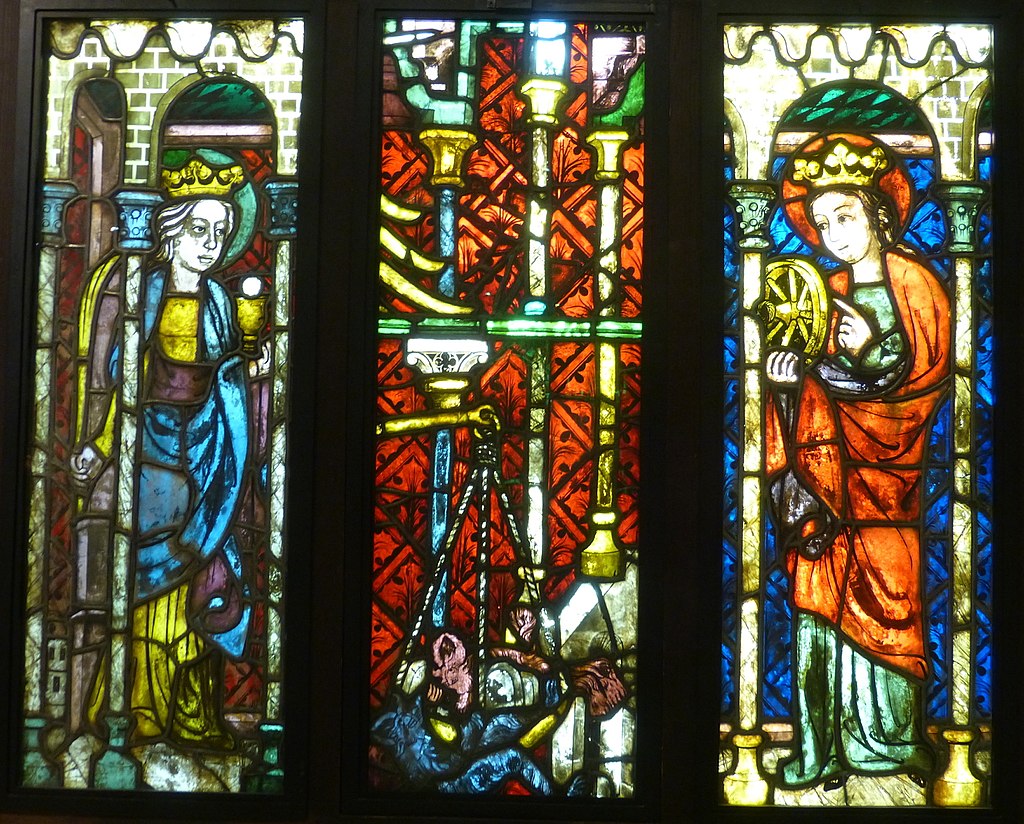
Medieval Vienna
In 1156, Austria became a duchy, with Vienna as its capital. The city’s strategic location on the Danube River contributed to its growing importance in trade and politics. By the 13th century, Vienna had become one of the largest cities in the Holy Roman Empire, setting the stage for its future as the imperial capital under the Habsburg dynasty.
Vienna’s historical journey from a Roman outpost to a medieval trading center laid the groundwork for its later prominence as the heart of the Habsburg Empire and its enduring cultural significance.
The Middle Ages marked a significant period of growth and development for Vienna. As the seat of the Babenberg dynasty from 1156 and later the Habsburg dynasty from 1278, the city flourished as a center of politics, religion, and trade. The construction of St. Stephen’s Cathedral, which began in the 12th century, symbolized Vienna’s rising prominence and became the city’s most iconic landmark.
During this period, Vienna’s strategic location on the Danube River enhanced its importance as a trading hub. The city became a crucial stop on the east-west trade routes, facilitating the exchange of goods between Western Europe and the Byzantine Empire. This economic prosperity led to population growth and urban expansion, with the city walls being extended multiple times to accommodate the burgeoning populace.

Pieter Bruegel the Elder: The Tower of Babel Vienna | Google Art Project via Wikimedia Commons
The Renaissance brought a new era of cultural and intellectual flowering to Vienna. The University of Vienna, founded in 1365, became a leading center of learning in Central Europe, attracting scholars from across the continent. The Habsburg rulers, particularly Maximilian I and Ferdinand I, were patrons of the arts and sciences, inviting renowned artists, musicians, and humanists to their court.
Vienna’s Renaissance period also saw significant architectural developments. The Hofburg, the principal palace of the Habsburg dynasty, was expanded and embellished with Renaissance elements. The city’s skyline began to take shape with the addition of ornate church spires and palatial residences for the nobility.
By the end of the 16th century, Vienna had established itself as a major European capital, setting the stage for its golden age during the Baroque period. The city’s medieval and Renaissance heritage laid the foundation for its later reputation as a global center of music, art, and intellectual discourse.
The 17th and 18th centuries were transformative periods for Vienna, marked by significant military conflicts, architectural achievements, and cultural developments that solidified its position as the heart of the Habsburg Empire.
In the early 17th century, Vienna faced one of its greatest challenges: the Thirty Years’ War (1618-1648). Although the city itself was not directly besieged, the conflict had far-reaching consequences for the Habsburg territories. The war’s end with the Peace of Westphalia in 1648 reshaped the political landscape of Europe and reinforced Vienna’s importance as a diplomatic center.
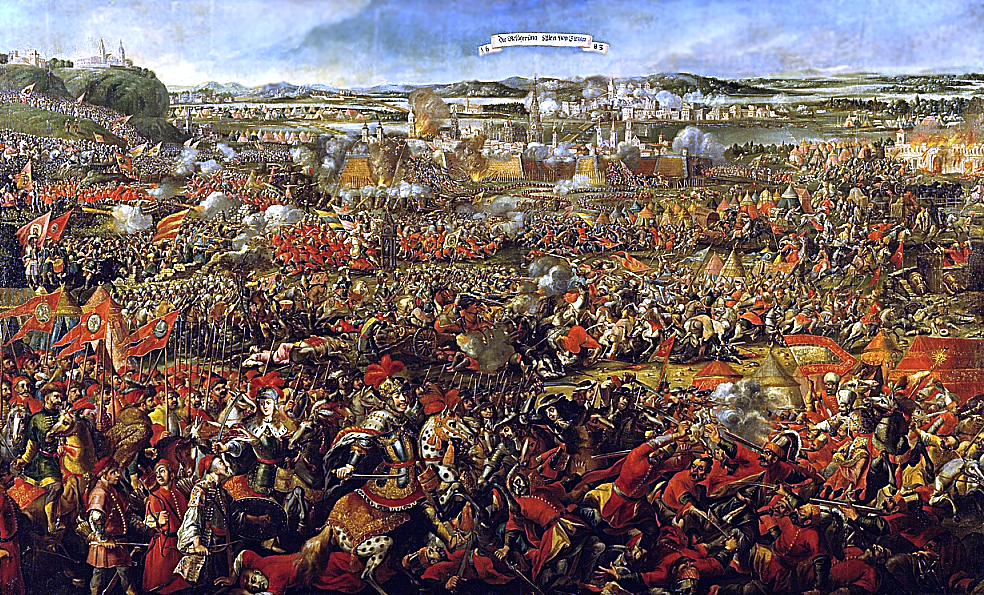
The Turkish Siege of Vienna
The Siege of Vienna
A pivotal moment in Vienna’s history came in 1683 with the Second Ottoman Siege. The city, under the leadership of Count Ernst Rüdiger von Starhemberg, withstood a two-month siege by Ottoman forces. The siege was lifted by the arrival of a relief army led by Polish King John III Sobieski, marking a turning point in the Ottoman-Habsburg wars and securing Vienna’s position as a bulwark of Christian Europe.
Following the Ottoman defeat, Vienna entered a period of rapid expansion and architectural transformation. The Baroque style, championed by the Habsburg rulers, came to dominate the cityscape. Notable buildings from this era include the Karlskirche (St. Charles Church), begun in 1716 and completed in 1737, which stands as a masterpiece of Baroque architecture. The Belvedere Palace, constructed between 1714 and 1723 for Prince Eugene of Savoy, is another prime example of Baroque splendor.
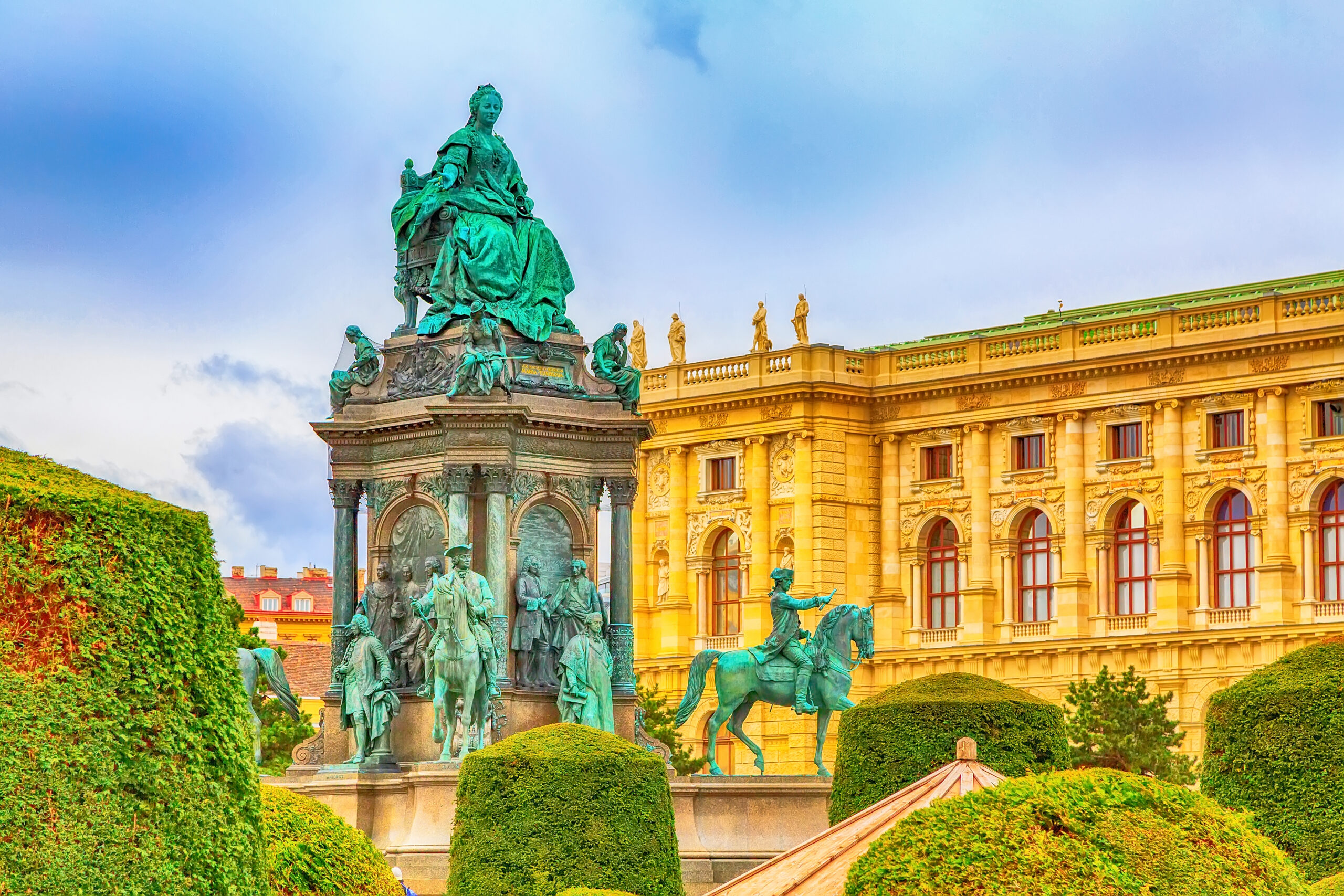
Statue of Maria Theresa in Vienna | Photo credit: Nataliya Nazarova
The Reign of Maria Theresa
The 18th century saw Vienna solidify its status as a cultural and intellectual powerhouse. Under the reign of Maria Theresa (1740-1780) and her son Joseph II (1765-1790), the city underwent significant reforms and modernization. The Hofburg Imperial Palace was expanded, and the Schönbrunn Palace was remodeled into its current form, becoming the summer residence of the Habsburg rulers.
Maria Theresa’s ascension to power in 1740 marked a significant turning point in Habsburg history and had a profound impact on Vienna. As the only female ruler in the House of Habsburg, her path to the throne was fraught with challenges and opposition.
When her father, Emperor Charles VI, died without a male heir, Maria Theresa inherited the Habsburg territories based on the Pragmatic Sanction of 1713. This document, which Charles VI had spent much of his reign trying to enforce, allowed for female succession in the absence of a male heir. However, despite the Pragmatic Sanction, Maria Theresa’s claim to the throne was immediately contested.
The War of Austrian Succession (1740-1748) erupted shortly after Maria Theresa’s accession. Prussia, under Frederick the Great, seized the opportunity to invade Silesia, one of the wealthiest Habsburg provinces. France, Spain, Bavaria, and Saxony also joined the conflict, each seeking to carve out portions of the Habsburg Empire. Despite these formidable opponents, Maria Theresa displayed remarkable resilience and political acumen.
In a pivotal moment, she appealed to the Hungarian Diet for support, presenting herself and her infant son before the assembly. This bold move, combined with her willingness to respect Hungarian rights and privileges, secured crucial Hungarian backing for her cause. The image of the young queen holding her child became a powerful symbol of her determination and legitimacy.
Throughout the war, Maria Theresa worked tirelessly to build alliances, reform the army, and mobilize resources. Although she ultimately lost Silesia to Prussia, she managed to preserve the bulk of her inheritance and emerged from the conflict with her position as ruler firmly established. Her successful defense of her claim laid the foundation for a long and influential reign that would reshape Vienna and the Habsburg lands.
This period also witnessed the rise of Vienna as the musical capital of Europe. The works of composers such as Haydn, Mozart, and the young Beethoven flourished in the city’s musical salons and newly built theaters. The Burgtheater, founded in 1741 and later known as “die Burg,” became one of Europe’s most important stages for dramatic arts.
By the end of the 18th century, Vienna had transformed from a medieval city into a grand imperial capital, setting the stage for its 19th-century golden age. The architectural and cultural foundations laid during this period continue to define Vienna’s character to this day, making it one of Europe’s most historically rich and visually stunning cities.

Emperor Franz Josef and Empress Elisabeth | Images via Wikimedia Commons
Elisabeth and Franz Joseph
Empress Elisabeth of Austria, affectionately known as “Sisi,” and Emperor Franz Joseph I were one of the most famous royal couples of the 19th century. Their relationship and reign had a profound impact on the Habsburg Empire and left an indelible mark on Vienna’s history and culture.
Franz Joseph ascended to the throne in 1848 at the young age of 18, during a time of political upheaval and revolution across Europe. He would go on to rule the Austro-Hungarian Empire for nearly 68 years, making him one of the longest-reigning monarchs in European history. Known for his conservative views and dedication to duty, Franz Joseph worked tirelessly to maintain the unity and power of the Habsburg Empire in the face of rising nationalism and modernization.
Elisabeth, born into Bavarian nobility, married Franz Joseph in 1854 at the age of 16. Unlike her husband, who was groomed for rulership from a young age, Elisabeth found the strict protocols and expectations of the Viennese court stifling. She was renowned for her beauty, independent spirit, and unconventional approach to royal life, which often put her at odds with court traditions.
Despite the challenges in their personal relationship, Franz Joseph and Elisabeth presided over a period of great cultural and architectural flourishing in Vienna. The development of the Ringstrasse, a grand boulevard encircling the city center, was one of the most significant urban planning projects of their reign. This massive undertaking transformed Vienna’s cityscape, replacing the old city walls with a series of impressive buildings and public spaces that continue to define the city’s character today.
Elisabeth, though often at odds with court life, became a symbol of the empire’s glamour and sophistication. She was particularly beloved in Hungary, where she advocated for greater autonomy and rights. Her influence played a role in the Austro-Hungarian Compromise of 1867, which established the dual monarchy of Austria-Hungary.
The couple’s reign was not without tragedy. Their only son, Crown Prince Rudolf, died in a murder-suicide pact at his hunting lodge in Mayerling in 1889, a scandal that shook the empire. Elisabeth herself was assassinated in 1898 by an Italian anarchist, an event that deeply affected Franz Joseph and the entire empire.
Franz Joseph continued to rule until his death in 1916, during the tumultuous years of World War I. His long reign saw Vienna transform from a medieval city into a modern metropolis, with advancements in infrastructure, education, and the arts. The legacy of Franz Joseph and Elisabeth continues to fascinate visitors to Vienna, with numerous palaces, museums, and cultural institutions preserving their memory and the grandeur of the Habsburg era.
Learn more about Elisabeth in this article.
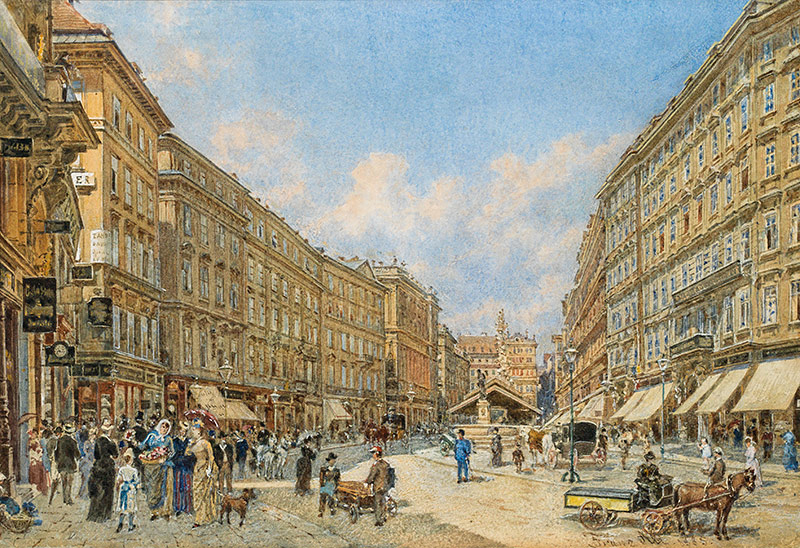
Franz Alt: The Graben in Vienna | Photo credit: Wikimedia Commons
Vienna in the 20th Century
The 20th century was a tumultuous period for Vienna, marked by significant political upheavals, cultural revolutions, and the city’s resilience in the face of adversity. The century began with Vienna at the height of its imperial glory as the capital of the Austro-Hungarian Empire, but would soon see dramatic changes.
The collapse of the Habsburg Empire following World War I in 1918 marked a turning point in Vienna’s history. The city, once the center of a vast multinational empire, became the capital of the small Austrian Republic. This period, known as “Red Vienna” (1918-1934), saw the implementation of progressive social policies by the Social Democratic administration, including the construction of numerous public housing projects and advancements in education and healthcare.
The 1930s brought political instability and the rise of authoritarianism. In 1938, Nazi Germany annexed Austria in the Anschluss, dramatically altering Vienna’s cultural and demographic landscape. The city’s large Jewish population, which had contributed significantly to its intellectual and artistic life, faced persecution and deportation. World War II brought further hardship, with Allied bombing causing considerable damage to the city.
After the war, Vienna found itself divided into four occupation zones controlled by the Allied powers, similar to Berlin. However, unlike Berlin, Vienna regained full independence in 1955 with the Austrian State Treaty, which reestablished Austria as a sovereign state and declared its permanent neutrality.
The latter half of the 20th century saw Vienna rebuilding and redefining itself. While maintaining its rich cultural heritage, the city embraced modernization. The construction of the Vienna International Centre in the 1970s established the city as one of the four official seats of the United Nations. Vienna also became an important center for diplomacy, hosting numerous international conferences and organizations.
Culturally, Vienna continued to be a significant center for the arts, particularly in music and theater. The Vienna Philharmonic maintained its reputation as one of the world’s finest orchestras, and the city’s opera houses and concert halls remained at the forefront of classical music performance. In the visual arts, the Vienna Secession movement’s legacy continued to influence the city’s artistic scene.
By the end of the 20th century, Vienna had successfully transitioned from an imperial capital to a modern, cosmopolitan city. It consistently ranked among the world’s most livable cities, known for its high quality of life, efficient public services, and rich cultural offerings. The fall of the Iron Curtain in 1989 repositioned Vienna geographically, transforming it from a city at the edge of Western Europe to a central hub connecting East and West.
As the century closed, Vienna stood as a city that had not only preserved its historical legacy but had also adapted to the changing times, setting the stage for its continued significance in the 21st century.
Related Reading
Be sure to explore my Destination Resources about the history, culture, and cuisine of the Low Countries. You will find plenty of books, articles, podcasts, films, and other audio-visul entertainment about Vienna, Central Europe, and other destinations.
- Zweig, Stefan, The World of Yesterday A memoir that provides a nostalgic and insightful look into Vienna’s golden age before World War I.
- Robertson, Angus. The Crossroads of Civilization: A HistoryAn exploration of Vienna’s rich cultural heritage, covering art, music, literature, and architecture.
- Cockett, Richard, Vienna: How the City of Ideas Created the Modern World An examination of Vienna’s outsized contribution to the development of Western scholarship, politics, science and culture.
- de Waal, Edmund, The Hare with Amber Eyes A family memoir that traces the history of a Viennese Jewish family through the 20th century.
- Roth, Joseph, The Radetzky March A novel that chronicles the decline of the Austro-Hungarian Empire through three generations of a Viennese family.
- King, David: Vienna, 1814: How the Conquerors of Napoleon Made Love, War, and Peace at the Congress of ViennaA vivid account of the diplomatic congress that reshaped Europe after Napoleon’s defeat.
I hope you’ve enjoyed this 8-Hour Guide: they are designed for cruise passengers and people with a limited time in a compelling city. You can find more below, or by visiting the 8-Hour Guide page of this website.
I am a food and travel writer as well as a cruise ship lecturer: my passion is exploring the cuisine, history, and culture of new places and writing about them here.
I hope you’ll consider staying connected with me by subscribing to my newsletter, Destination Curation, where I look at the intersection of history, culture, and cuisine in major destinations. You can also join the conversation on Facebook and Instagram.
Enjoy More Posts Like This One
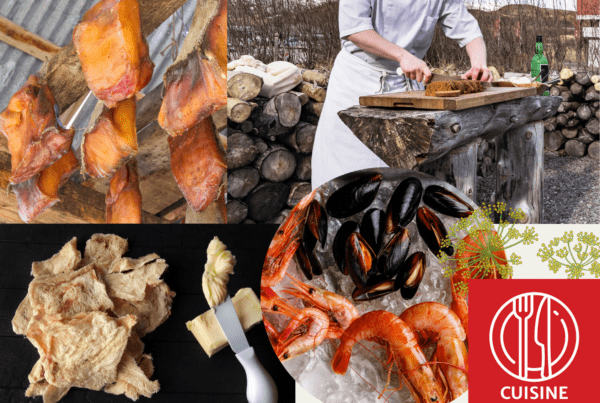 The Must-Try Things to Eat and Drink in Iceland
The Must-Try Things to Eat and Drink in Iceland
The Must-Try Things to Eat and Drink in Iceland
 8-Hours in Bruges, Belgium: The Perfect Itinerary
8-Hours in Bruges, Belgium: The Perfect Itinerary
8-Hours in Bruges, Belgium: The Perfect Itinerary
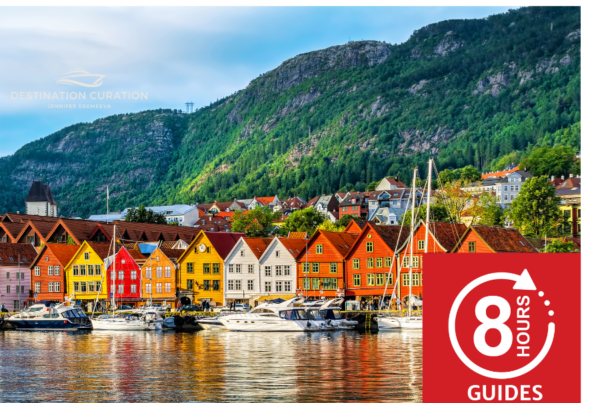 8 Hours in Bergen: A Guide to Norway’s Second City
8 Hours in Bergen: A Guide to Norway’s Second City
8 Hours in Bergen: A Guide to Norway’s Second City
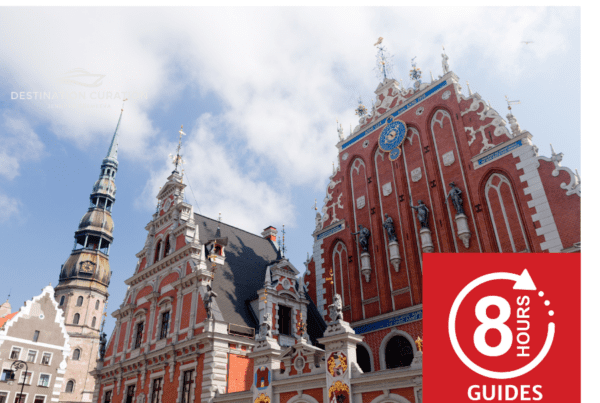 8 Hours in Captivating Riga, The Capital of Latvia
8 Hours in Captivating Riga, The Capital of Latvia
8 Hours in Captivating Riga, The Capital of Latvia
 Tangy Kefir Brined Chicken Shashlik
Tangy Kefir Brined Chicken Shashlik
Tangy Kefir Brined Chicken Shashlik
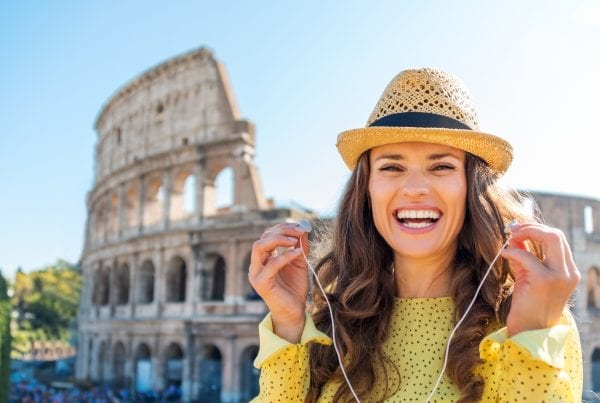 The Best History Podcast Shows to Listen to in 2024
The Best History Podcast Shows to Listen to in 2024
The Best History Podcast Shows to Listen to in 2024
 How to Make Shashlik: Recipes for Juicy Meat Skewers
How to Make Shashlik: Recipes for Juicy Meat Skewers
How to Make Shashlik: Recipes for Juicy Meat Skewers
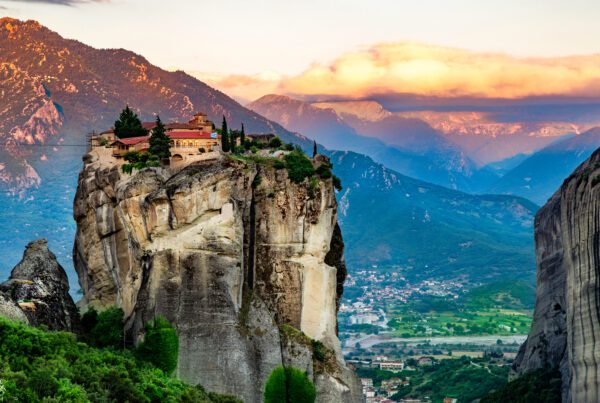 Day Trips from Athens: Meteora, Greece’s Hidden Gem
Day Trips from Athens: Meteora, Greece’s Hidden Gem
Day Trips from Athens: Meteora, Greece’s Hidden Gem
 My Top 10 Travel Planning Tools
My Top 10 Travel Planning Tools
My Top 10 Travel Planning Tools
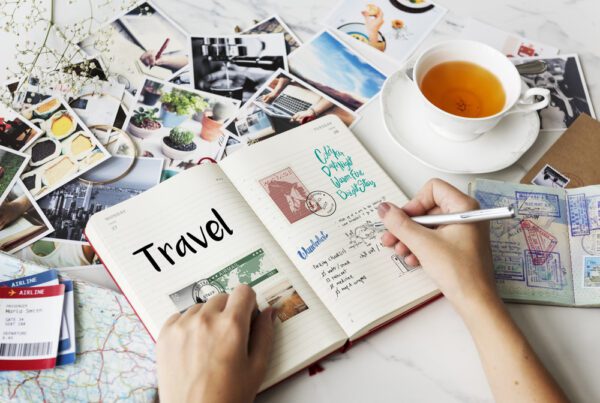 7 Steps to a Perfect Travel Bucket List
7 Steps to a Perfect Travel Bucket List
7 Steps to a Perfect Travel Bucket List

